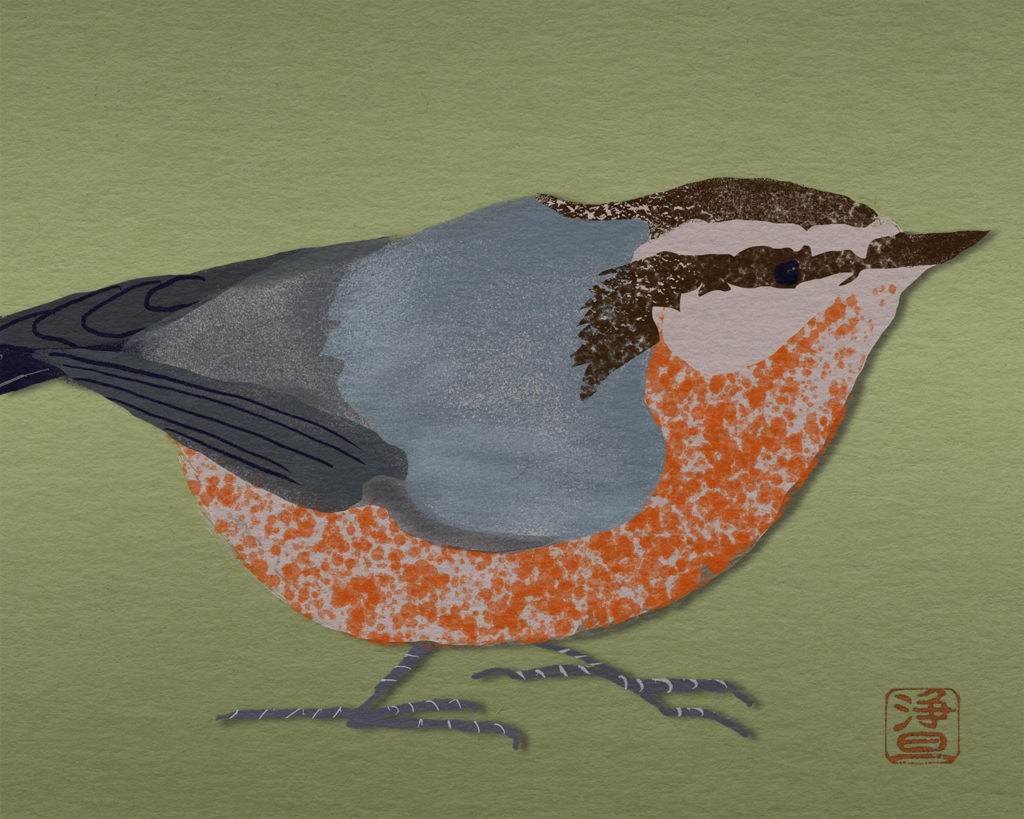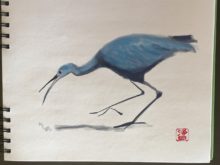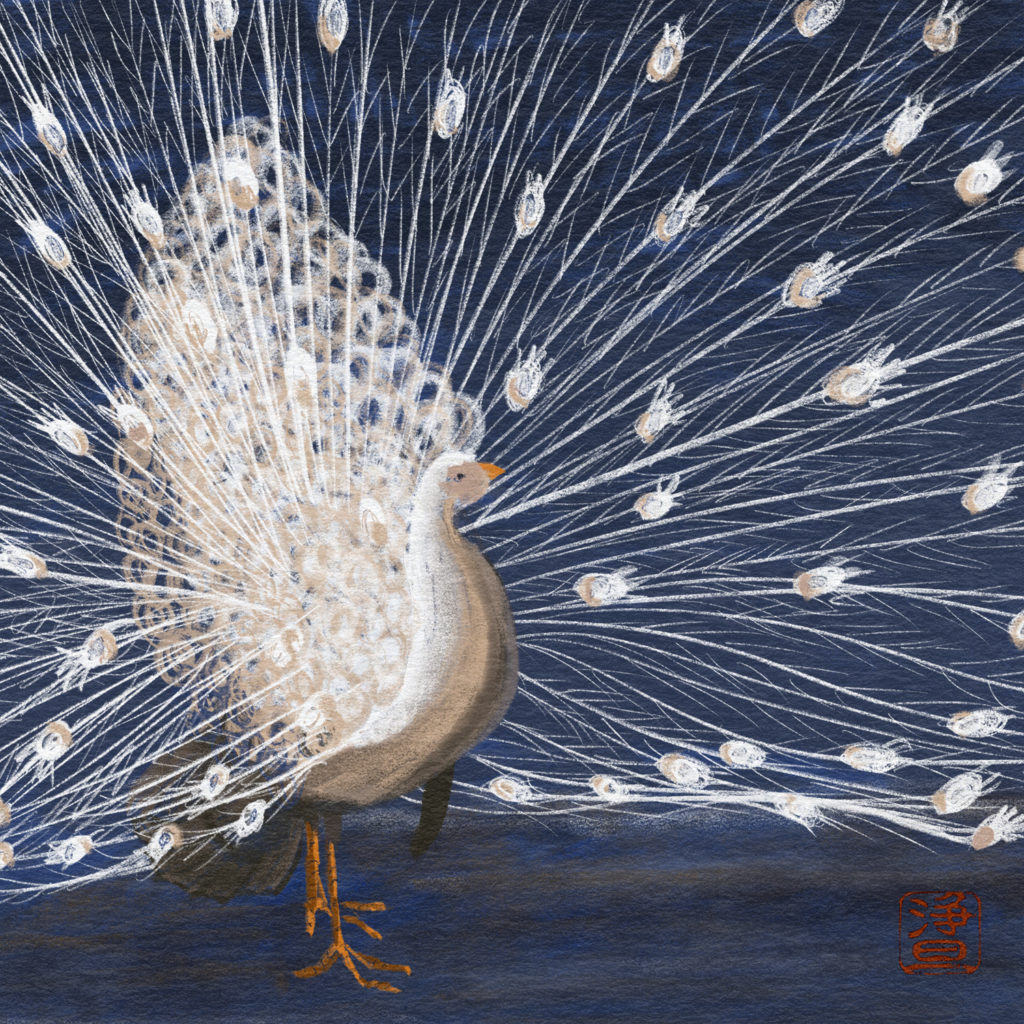 I started drawing or painting a bird a day on November 13, 2020 … and so today marks the 365th bird. I didn’t start out to do this for a year, but around the 60th or 70th bird, it seemed like a good idea. I’ve turned to peacocks to mark landmarks in this journey before, so it seemed appropriate to choose a white peacock for this final day. The white peacock is rare but not an albino. Unlike in albinos, its eyes, beak and feet are pigmented. A genetic mutation called leucism causes the feathers, yellowish at birth, to turn pure white with age. In parts of India, they symbolize unconditional love, which seemed a good note on which to end this year of birds, which is perhaps more accurately deemed a year of falling in love with birds…
I started drawing or painting a bird a day on November 13, 2020 … and so today marks the 365th bird. I didn’t start out to do this for a year, but around the 60th or 70th bird, it seemed like a good idea. I’ve turned to peacocks to mark landmarks in this journey before, so it seemed appropriate to choose a white peacock for this final day. The white peacock is rare but not an albino. Unlike in albinos, its eyes, beak and feet are pigmented. A genetic mutation called leucism causes the feathers, yellowish at birth, to turn pure white with age. In parts of India, they symbolize unconditional love, which seemed a good note on which to end this year of birds, which is perhaps more accurately deemed a year of falling in love with birds…
Category: iPad Paintings
Spirit Bird
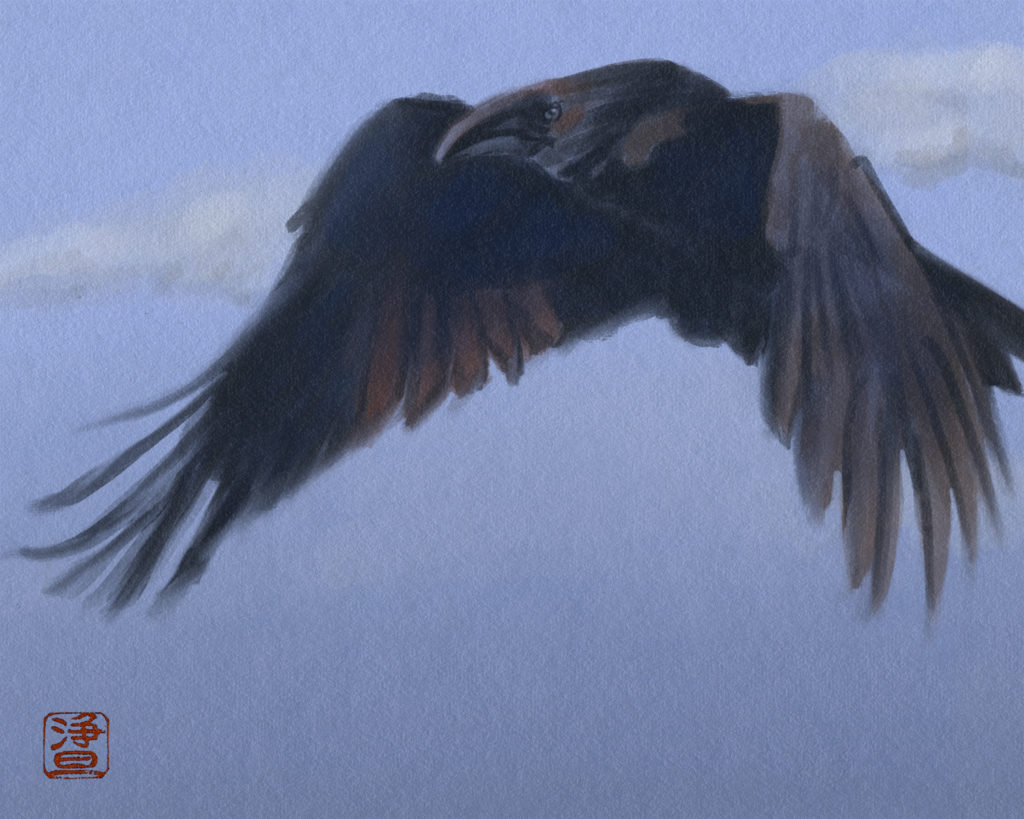 Spirit bird, trickster, jokester, and, for us with our small orchard of pioneer pecan trees, a willing harvester…I love these birds!
Spirit bird, trickster, jokester, and, for us with our small orchard of pioneer pecan trees, a willing harvester…I love these birds!
The Pecans are Good…
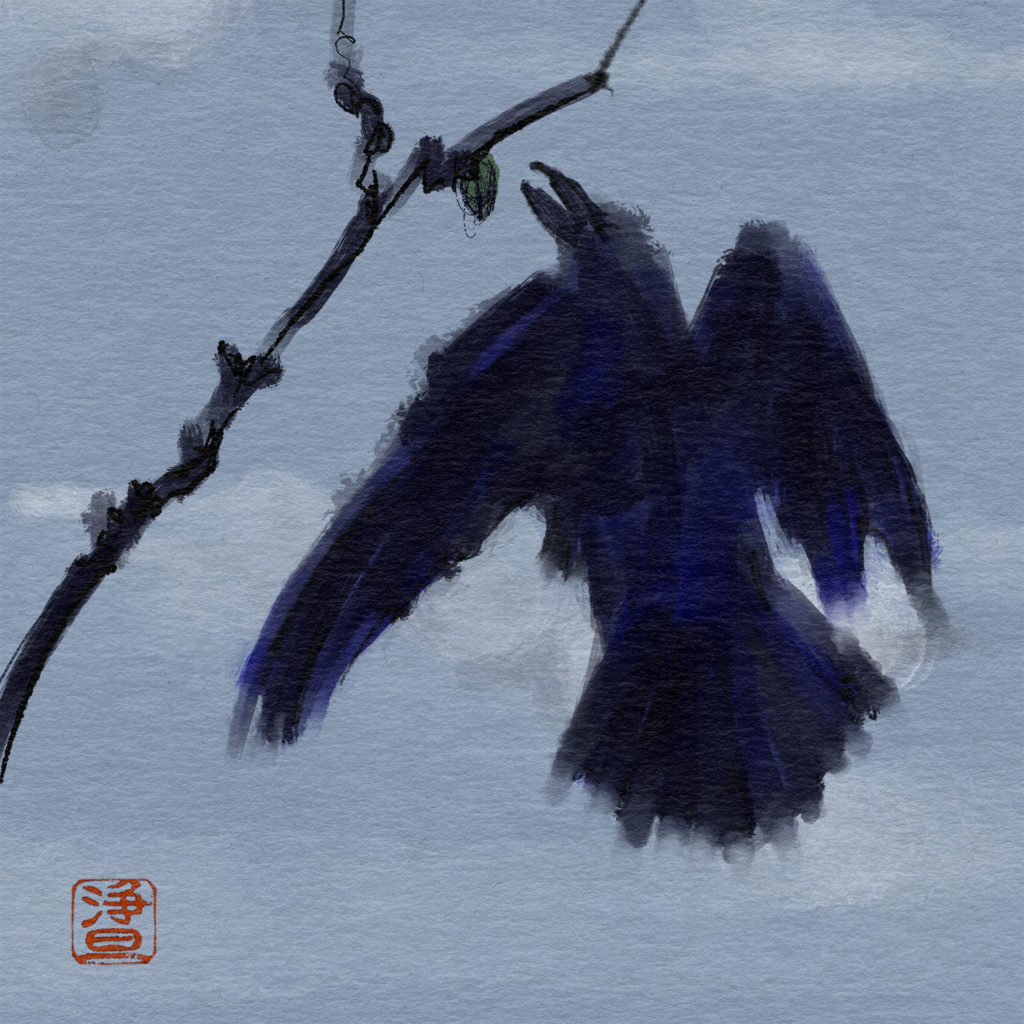 Almost exactly a year ago I started drawing the ravens in our big pecan trees. As the trees turn, the pecans are getting good, and the ravens are happy …
Almost exactly a year ago I started drawing the ravens in our big pecan trees. As the trees turn, the pecans are getting good, and the ravens are happy …
Condor
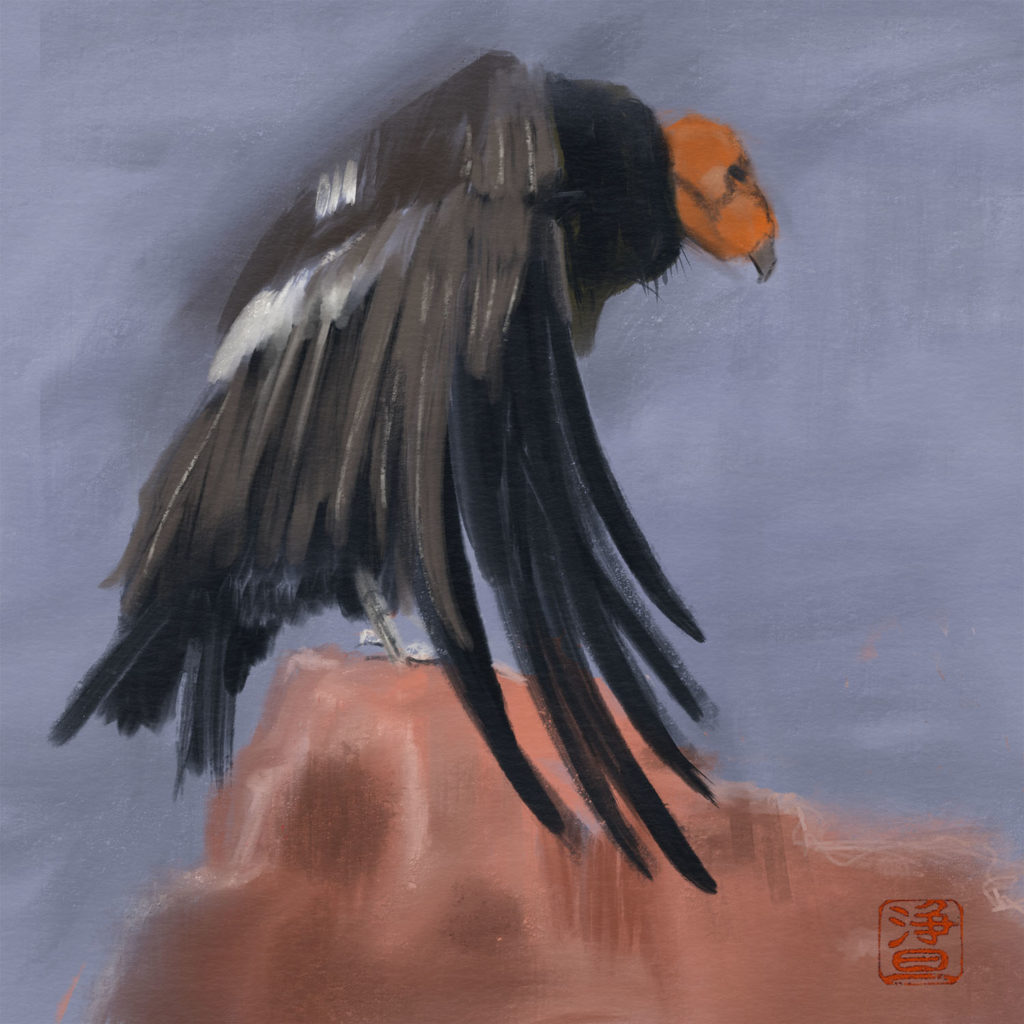 We almost lost the California condor, the largest bird in North America. By 1982, there were only 22 left in the entire world. A captive breeding program and then careful reintroduction to the wild have restored their population to over 400, a portion of which live in northern Arizona and southern Utah, and are often seen a few miles from my home near Lava Point and Angels Landing in Zion Naitonal Park. They are stunning in flight but a bit spooky when perched. Like their cousins, the turkey vulture,they feed on carrion, a great service in cleaning up road kill and other carnage. Both are in the family Cathartidae, which comes from the Greek word for “purifier.”
We almost lost the California condor, the largest bird in North America. By 1982, there were only 22 left in the entire world. A captive breeding program and then careful reintroduction to the wild have restored their population to over 400, a portion of which live in northern Arizona and southern Utah, and are often seen a few miles from my home near Lava Point and Angels Landing in Zion Naitonal Park. They are stunning in flight but a bit spooky when perched. Like their cousins, the turkey vulture,they feed on carrion, a great service in cleaning up road kill and other carnage. Both are in the family Cathartidae, which comes from the Greek word for “purifier.”
American White Pelican
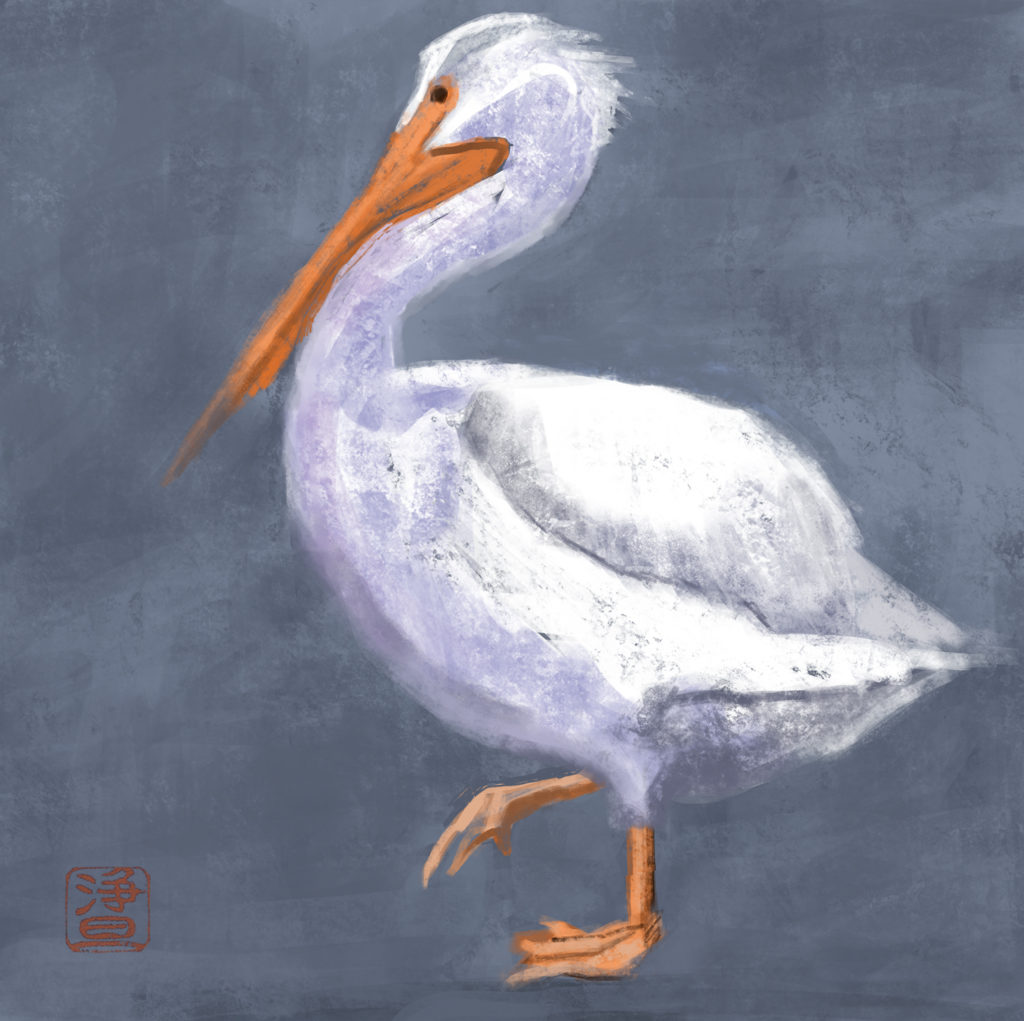 After yesterday’s lazuli bunting, which could fit in the palm of your hand, the American white pelican is one of the largest flying birds in the world–second in North America only to the California Condor. An adult female can weigh up to 30 pounds, as compared to a bald eagle, which seldom tops 12 pounds (really, they are that lightweight.) Pelicans look so awkward, especially when they are walking, but they can soar!
After yesterday’s lazuli bunting, which could fit in the palm of your hand, the American white pelican is one of the largest flying birds in the world–second in North America only to the California Condor. An adult female can weigh up to 30 pounds, as compared to a bald eagle, which seldom tops 12 pounds (really, they are that lightweight.) Pelicans look so awkward, especially when they are walking, but they can soar!
Lazuli Bunting
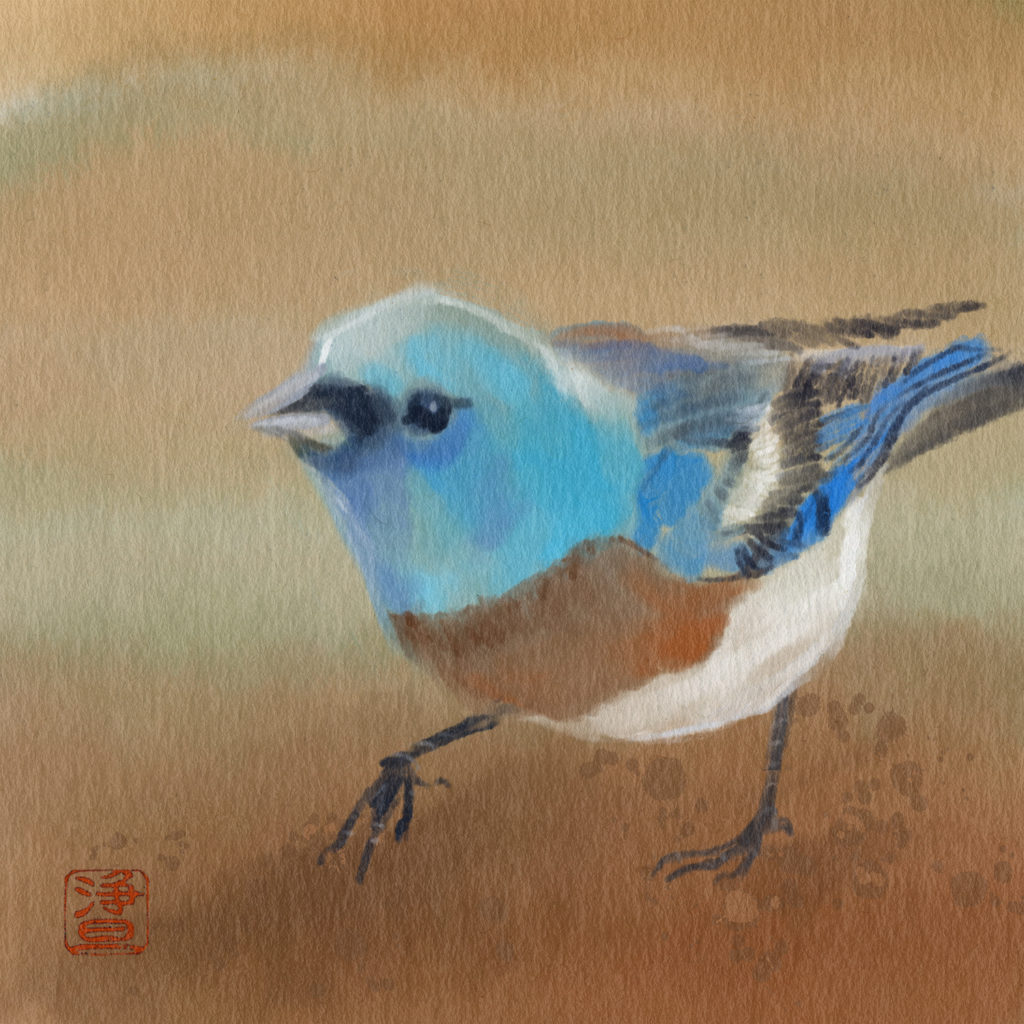 I’ve never seen a lazuli bunting in the wild, even though they breed in southern Utah, where I live. They are such little jewels of birds — their scientific name, Passerina amoena, means beautiful sparrow. This drawing is based on a photograph by the Oregon wildlife photographer Terry Steele.
I’ve never seen a lazuli bunting in the wild, even though they breed in southern Utah, where I live. They are such little jewels of birds — their scientific name, Passerina amoena, means beautiful sparrow. This drawing is based on a photograph by the Oregon wildlife photographer Terry Steele.
On the Way Out…
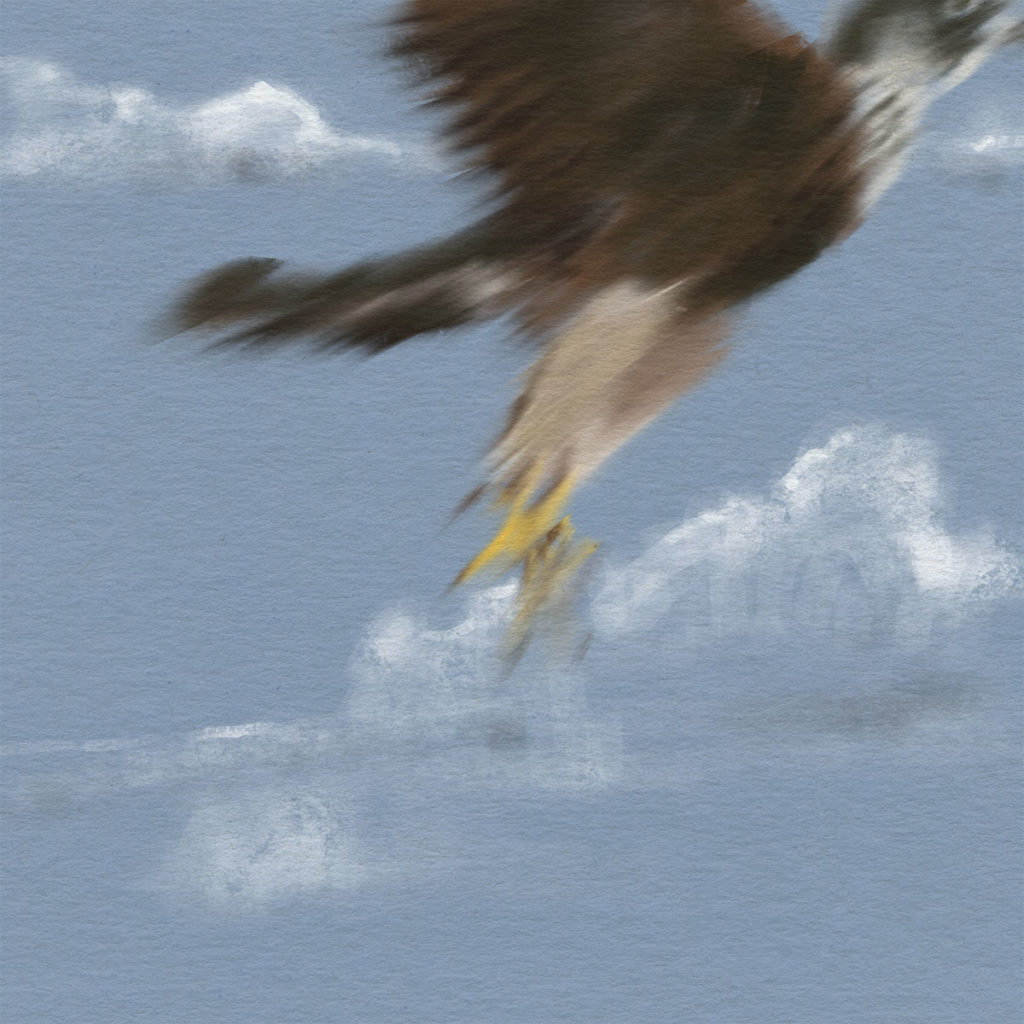
Another Peregrine…
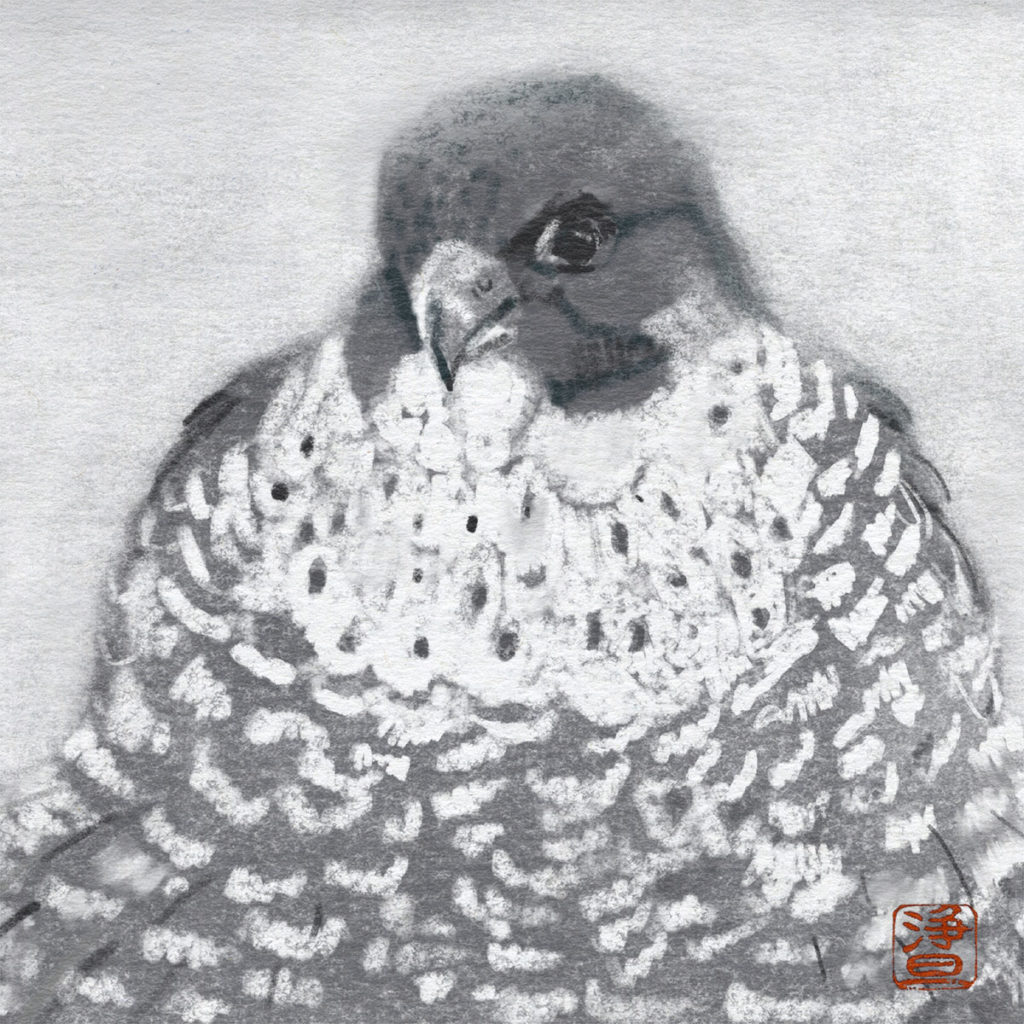 Another peregrine. Historically, falcons were given to visiting dignitaries or from one royal to another, perhaps because the are so royal themselves.
Another peregrine. Historically, falcons were given to visiting dignitaries or from one royal to another, perhaps because the are so royal themselves.
Peregrine Falcon
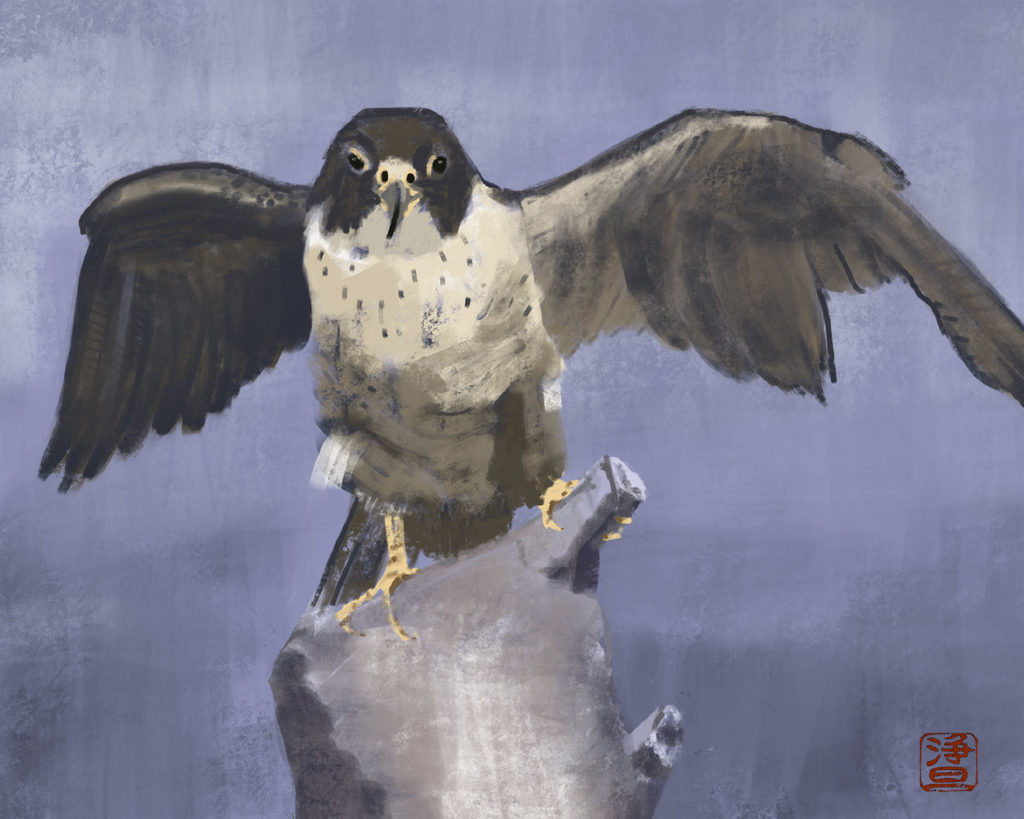 Every time I focus on a bird I thought was familiar, I learn the most amazing new things — like the fact that the peregrine falcon is the fastest creature on earth, reaching speeds of over 200 mph in its dives.
Every time I focus on a bird I thought was familiar, I learn the most amazing new things — like the fact that the peregrine falcon is the fastest creature on earth, reaching speeds of over 200 mph in its dives.
Southwest Willow Flycatcher
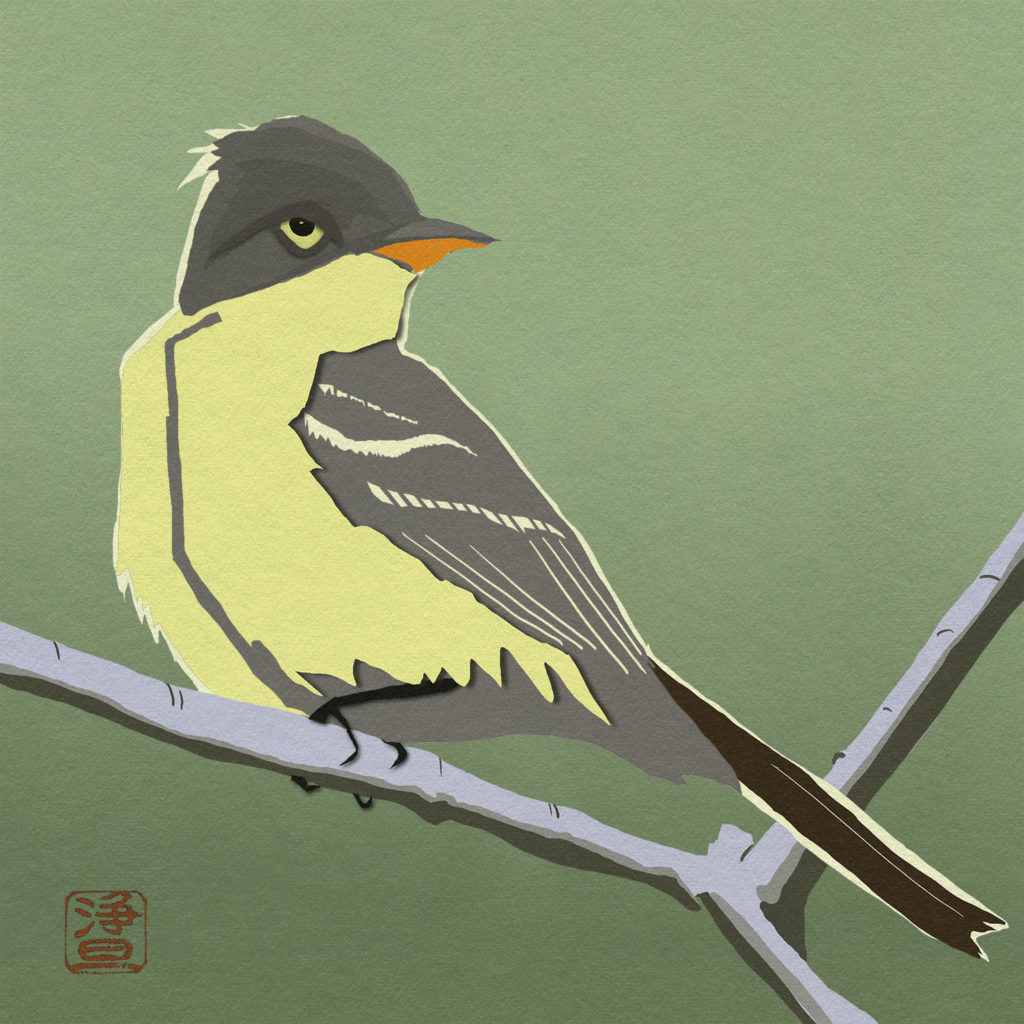 Southwest willow flycatcher. If you are fly fishing and it occurs to you that the mosquitoes are not as bad as you feared, these little guys may well be the cause.
Southwest willow flycatcher. If you are fly fishing and it occurs to you that the mosquitoes are not as bad as you feared, these little guys may well be the cause.
Spotted Owl
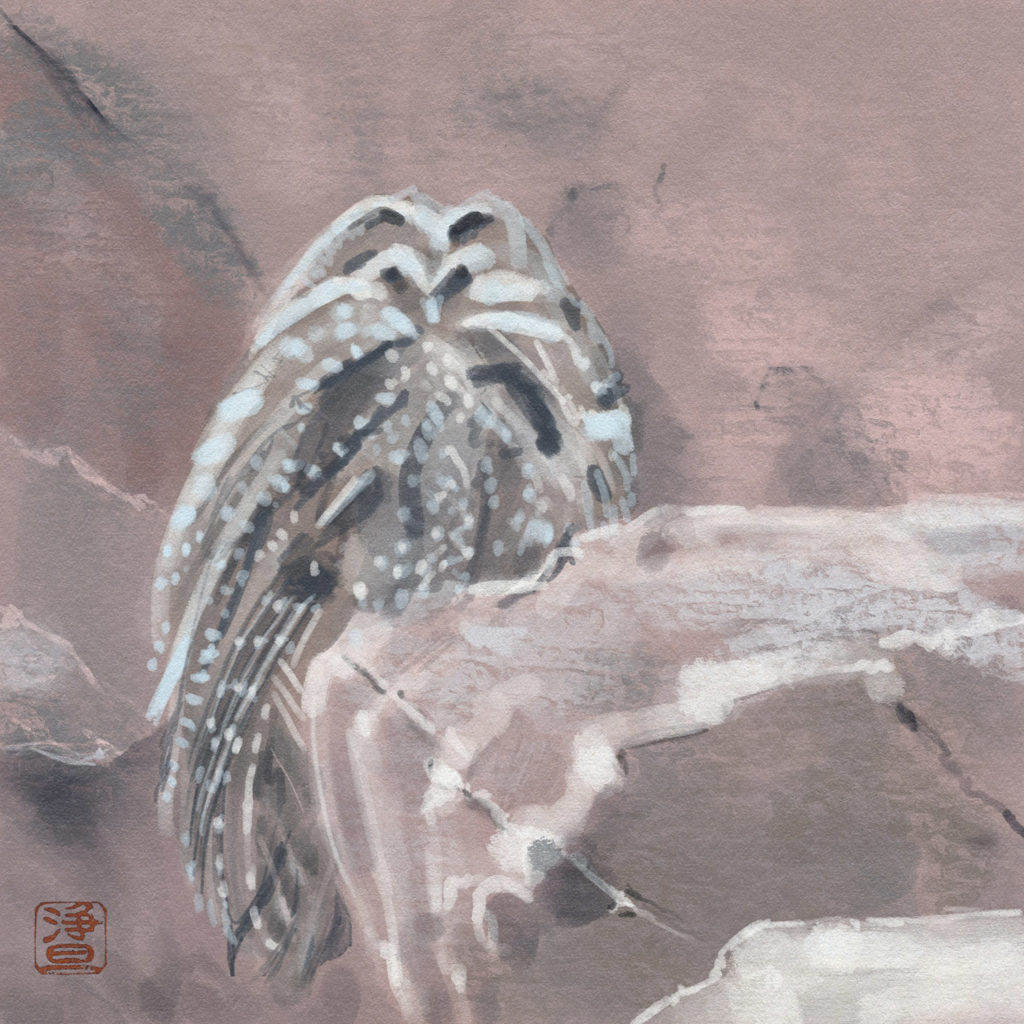 Zion National Park was designated as critical habitat for the endangered Mexican Spotted Owl in 2004. Although they are usually found in forest habitat, they do well in the shadowed canyons where they blend into the rocks and have plenty of ledges and outcroppings to perch on as they watch for deer mice and voles and other rodents. This drawing was based on video taken by Zion Ranger Mark Ratchford in 2020.
Zion National Park was designated as critical habitat for the endangered Mexican Spotted Owl in 2004. Although they are usually found in forest habitat, they do well in the shadowed canyons where they blend into the rocks and have plenty of ledges and outcroppings to perch on as they watch for deer mice and voles and other rodents. This drawing was based on video taken by Zion Ranger Mark Ratchford in 2020.
A Wake-up Call
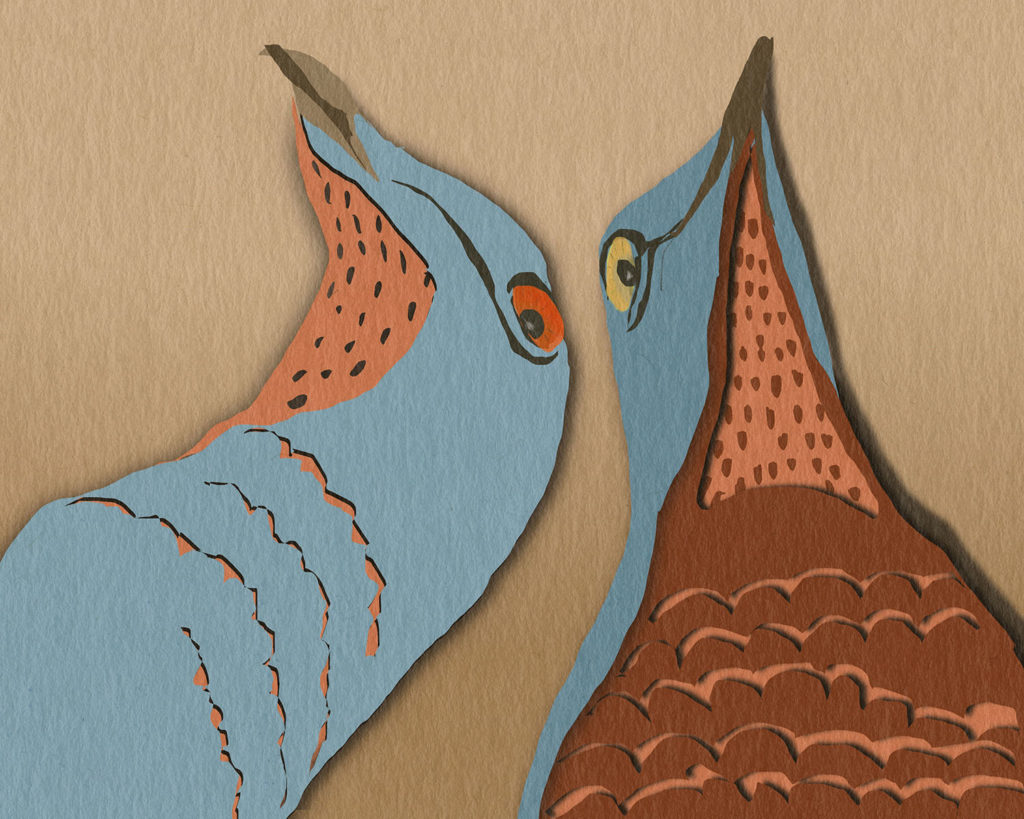
 As I look at endangered and threatened birds in Utah, I realize I need to start with a bird that is now extinct, but once flew over Utah skies in unbelievable numbers, as it did across much of the States and around the world: the passenger pigeon. Estimates of their population in the early 19th century are as high as five billion, and dense flocks a mile wide and two miles long took hours to pass; in 1914, the last passenger pigeon in the world, Martha, died in the Cincinnati Zoo. Their sudden decline and ultimate extinction, witnessed in real time, was the start of a widespread concern with bird populations. This piece is based on a photograph of preserved specimens at the Field Museum of Natural HIstory in Chicago, photograph by Marc Schlossman. And the colors are inspired by Audobon’s portrait of the tragic birds.
As I look at endangered and threatened birds in Utah, I realize I need to start with a bird that is now extinct, but once flew over Utah skies in unbelievable numbers, as it did across much of the States and around the world: the passenger pigeon. Estimates of their population in the early 19th century are as high as five billion, and dense flocks a mile wide and two miles long took hours to pass; in 1914, the last passenger pigeon in the world, Martha, died in the Cincinnati Zoo. Their sudden decline and ultimate extinction, witnessed in real time, was the start of a widespread concern with bird populations. This piece is based on a photograph of preserved specimens at the Field Museum of Natural HIstory in Chicago, photograph by Marc Schlossman. And the colors are inspired by Audobon’s portrait of the tragic birds.
Bendire’s Thrasher
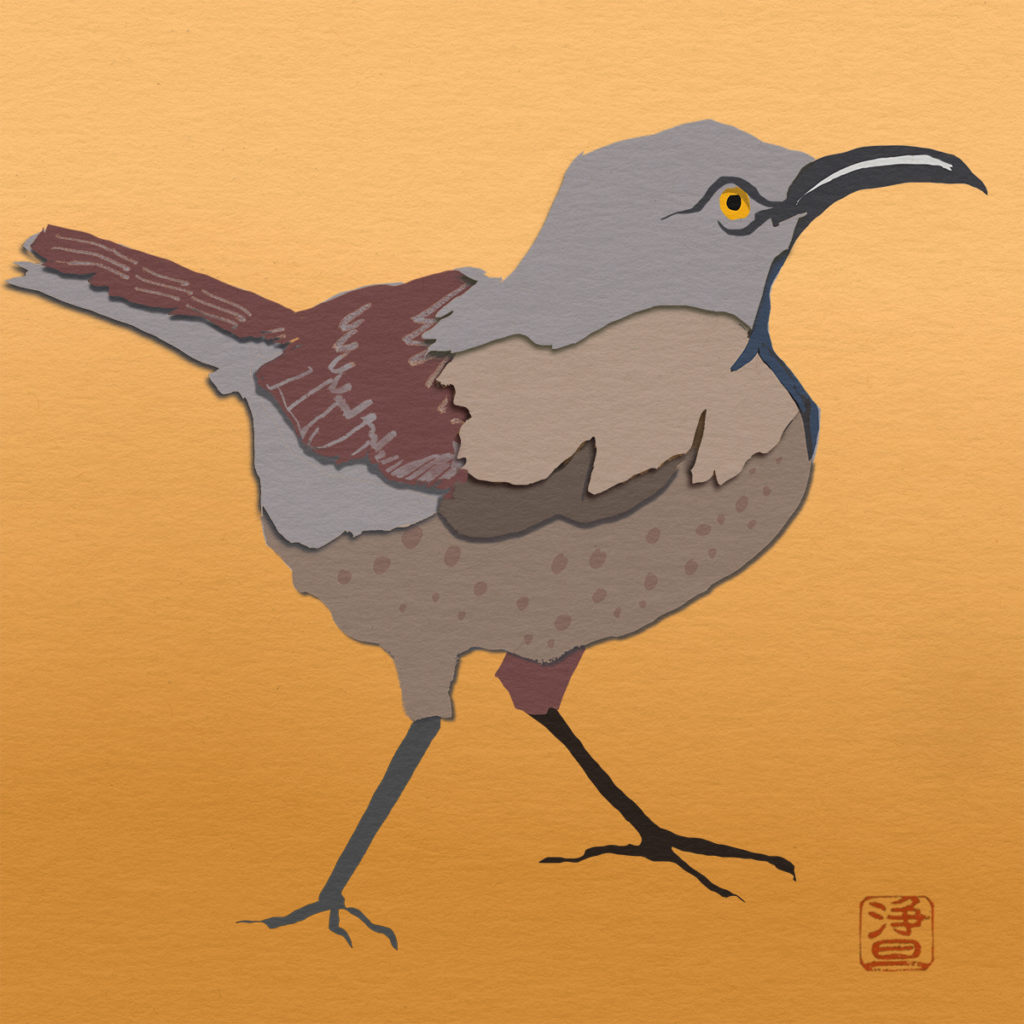 As I enter my last couple weeks of “My Year of Birds,” I want to focus on endangered, threatened, and sensitive birds seen in Utah…. Tonight, a Bendire’s Thrasher, a secretive little desert bird who often hangs out on the ground, and whose survival is threatened by a changing climate and loss of habitat. This wee portrait inspired by a photograph by Amy Hunt, posted on Flickr.
As I enter my last couple weeks of “My Year of Birds,” I want to focus on endangered, threatened, and sensitive birds seen in Utah…. Tonight, a Bendire’s Thrasher, a secretive little desert bird who often hangs out on the ground, and whose survival is threatened by a changing climate and loss of habitat. This wee portrait inspired by a photograph by Amy Hunt, posted on Flickr.
Great Egret Chick
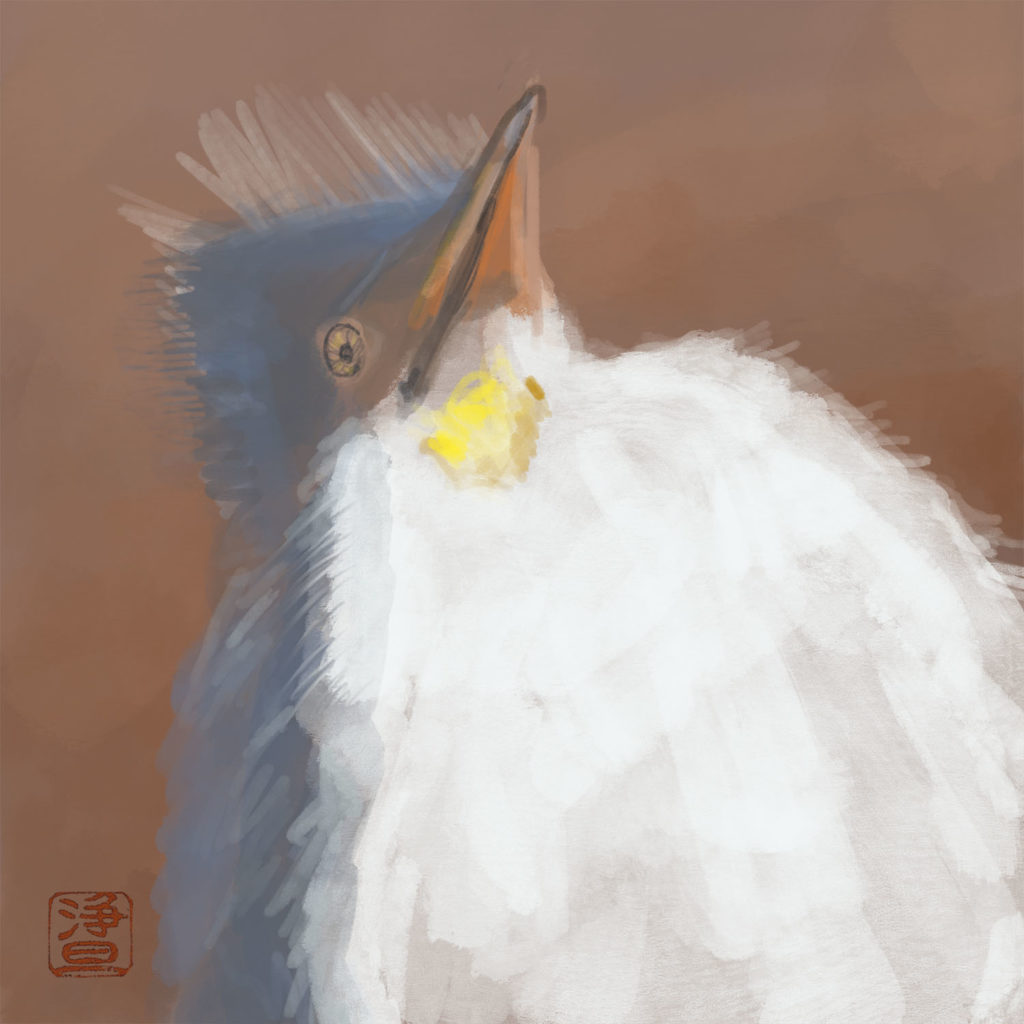
Out of Darkness Drawn…
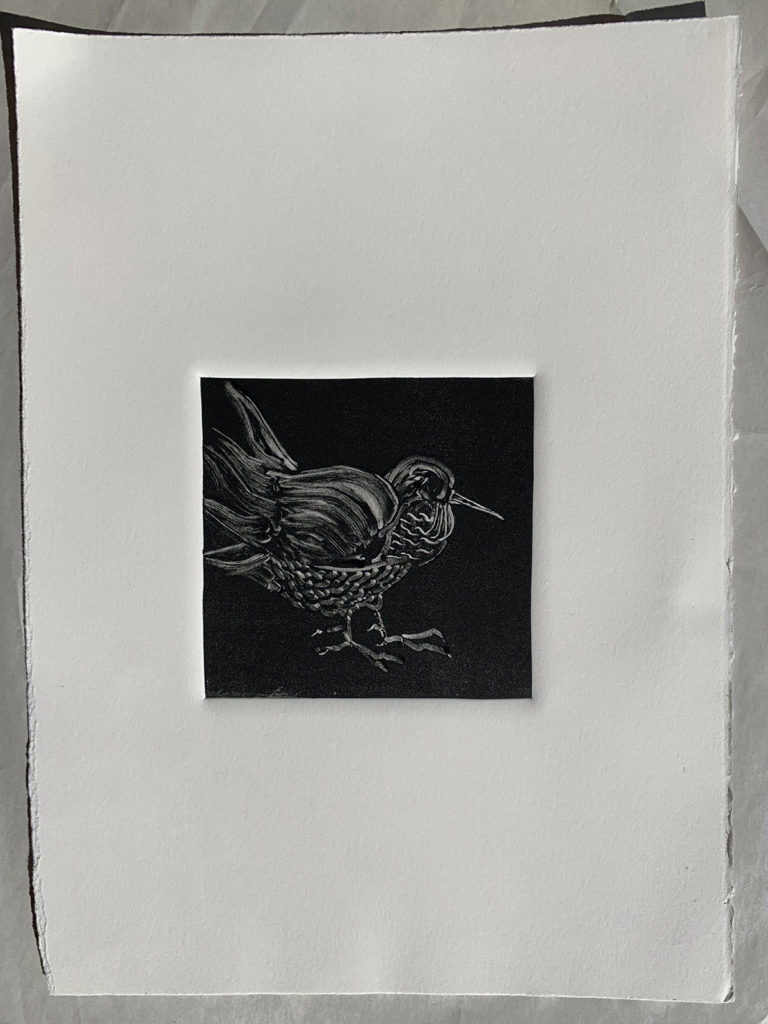 I haven’t worked on the etching press in a very long time. It’s great to be experimenting with monotypes again!
I haven’t worked on the etching press in a very long time. It’s great to be experimenting with monotypes again!
Great Egret…
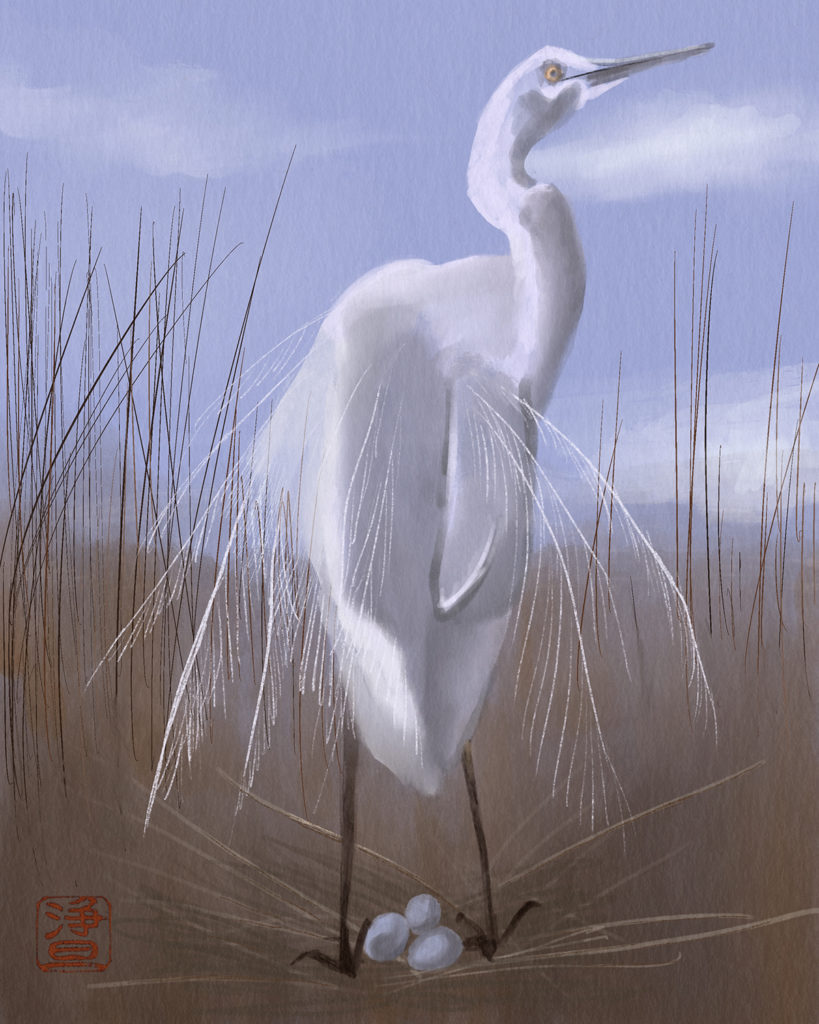
Little Pink Bird
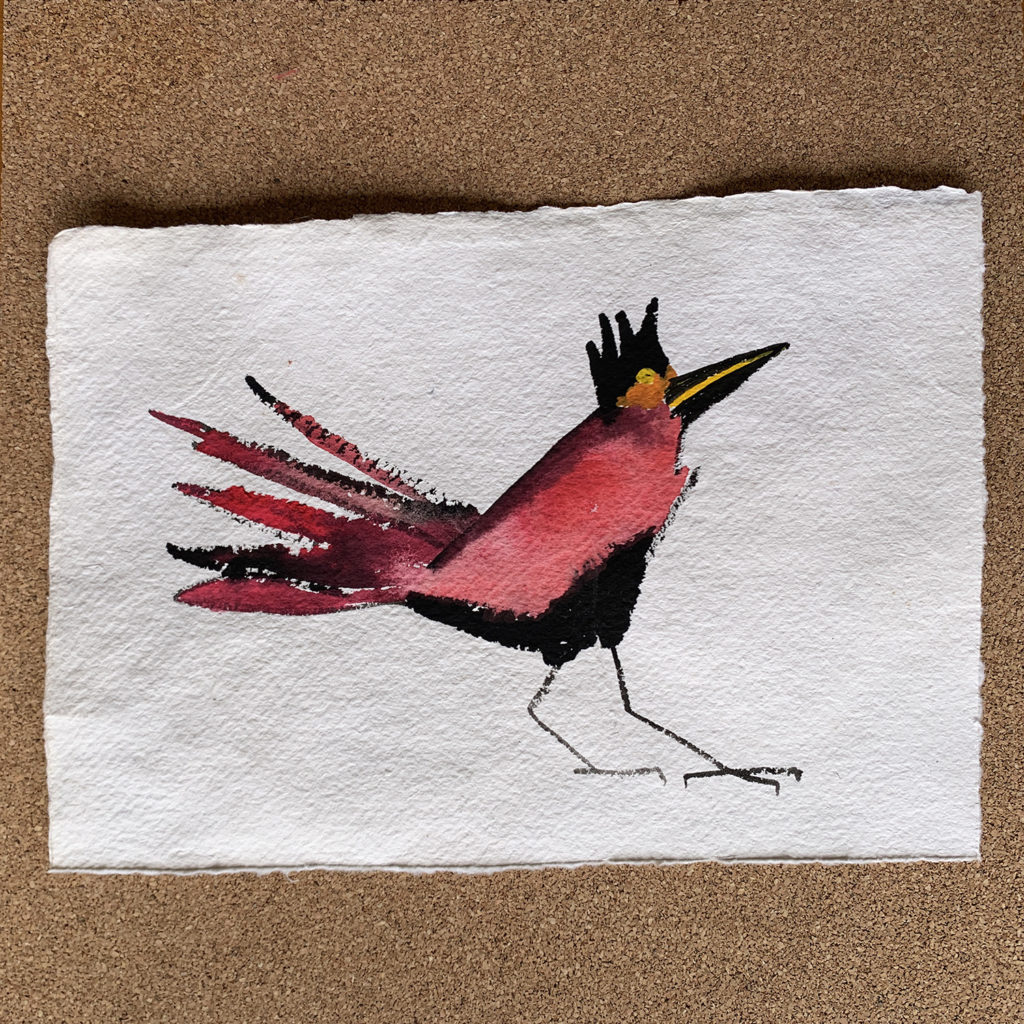 Found some hand-made paper at the studio today… what fun!
Found some hand-made paper at the studio today… what fun!
Great White Egret
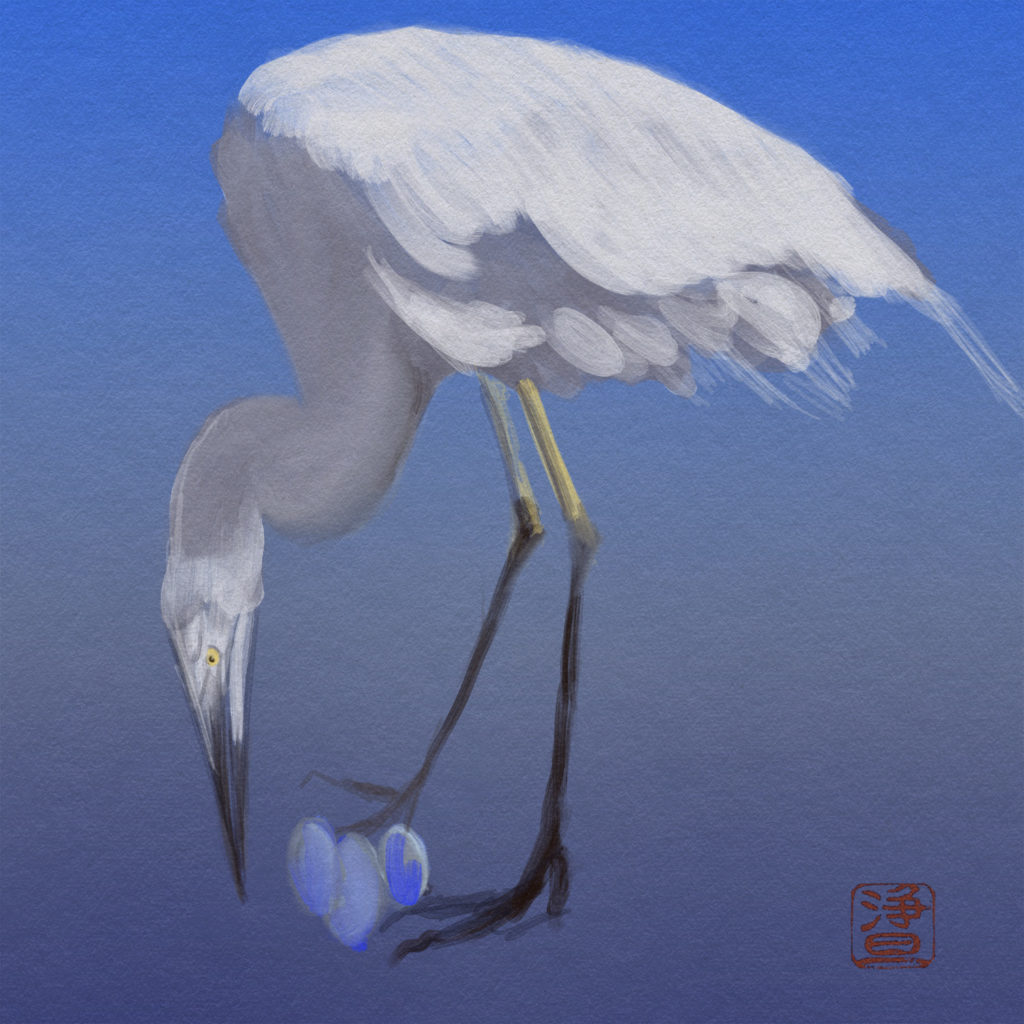
Last Little Blue (for awhile)
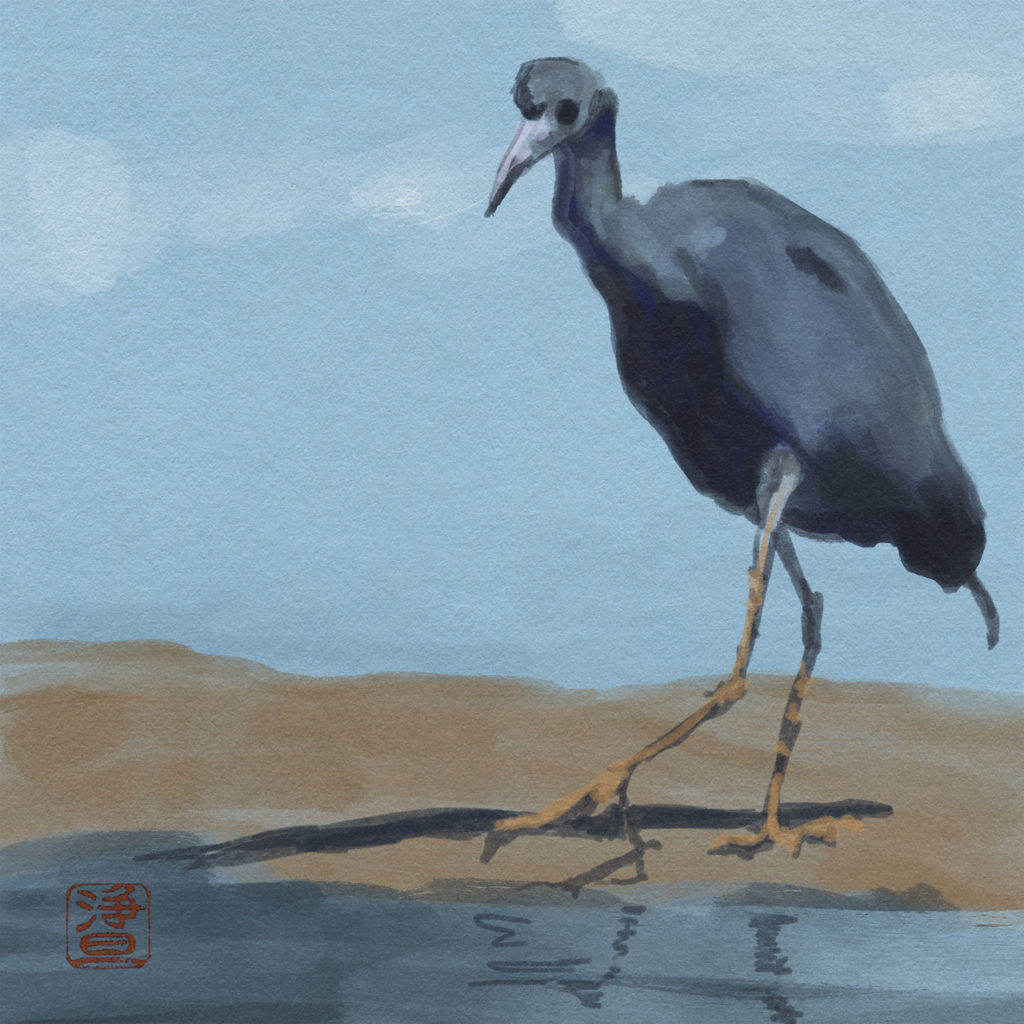
Who’s Down there?
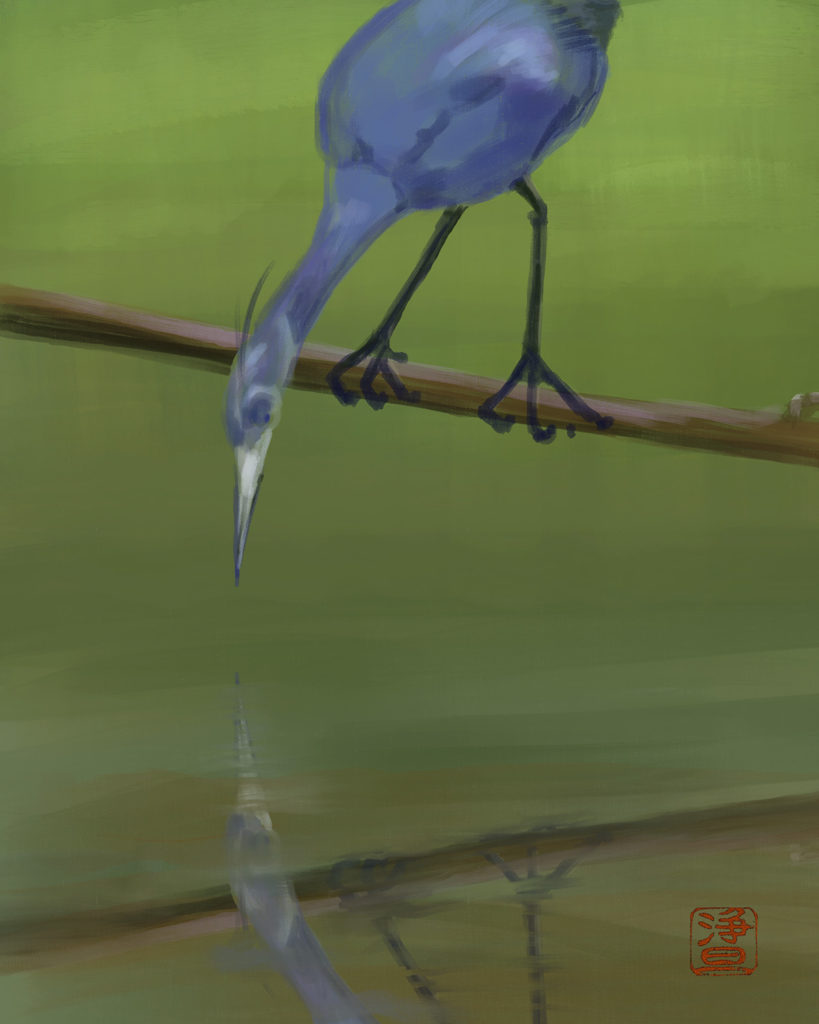
Little Blue…
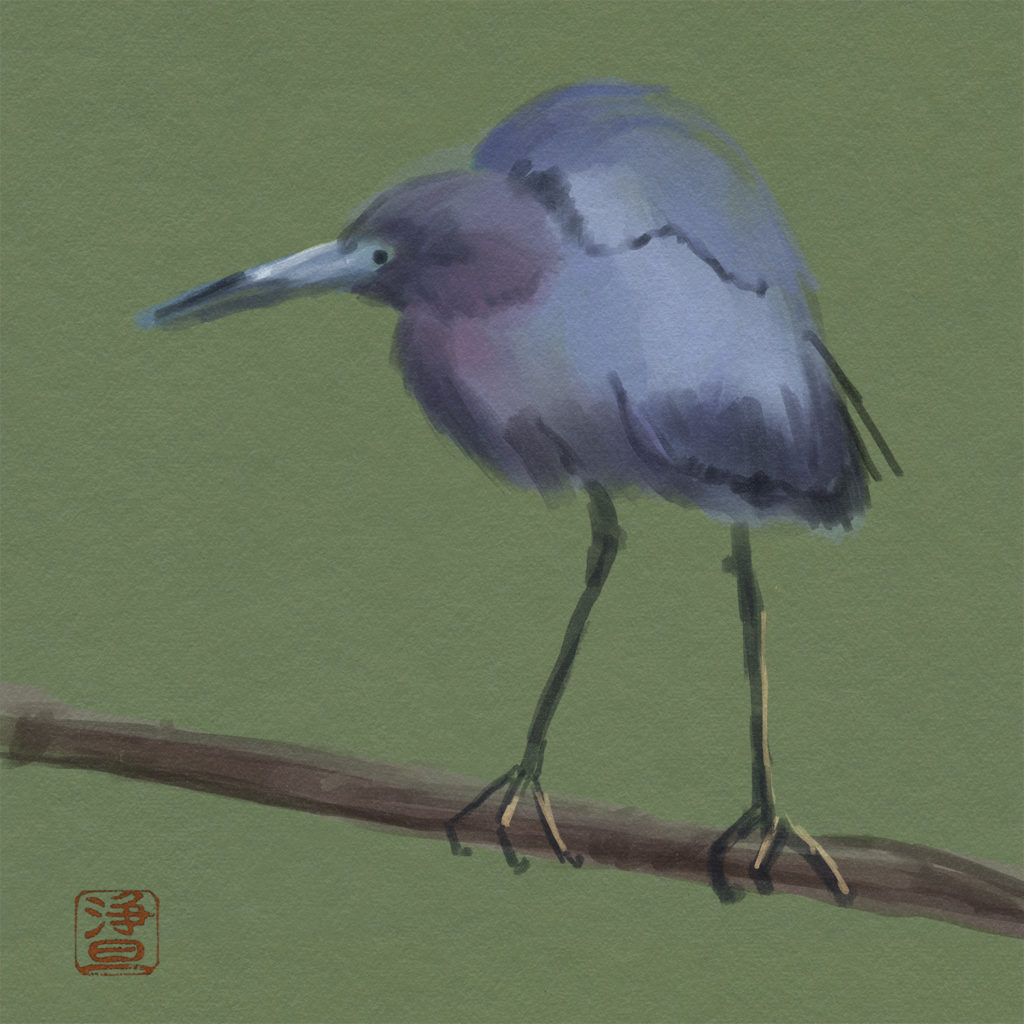
Whimsy
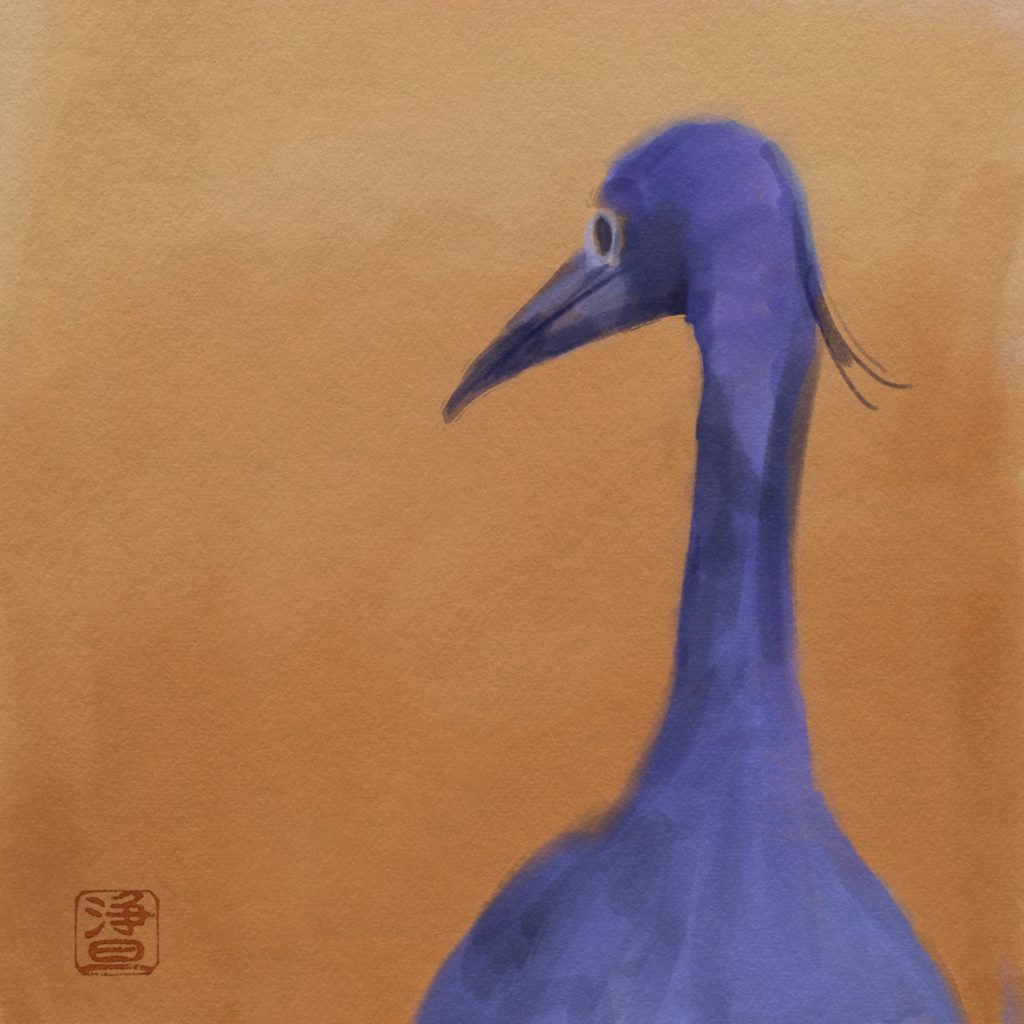
They just make me laugh, with the quirky and sometimes comical expressions!
Little Blue Heron

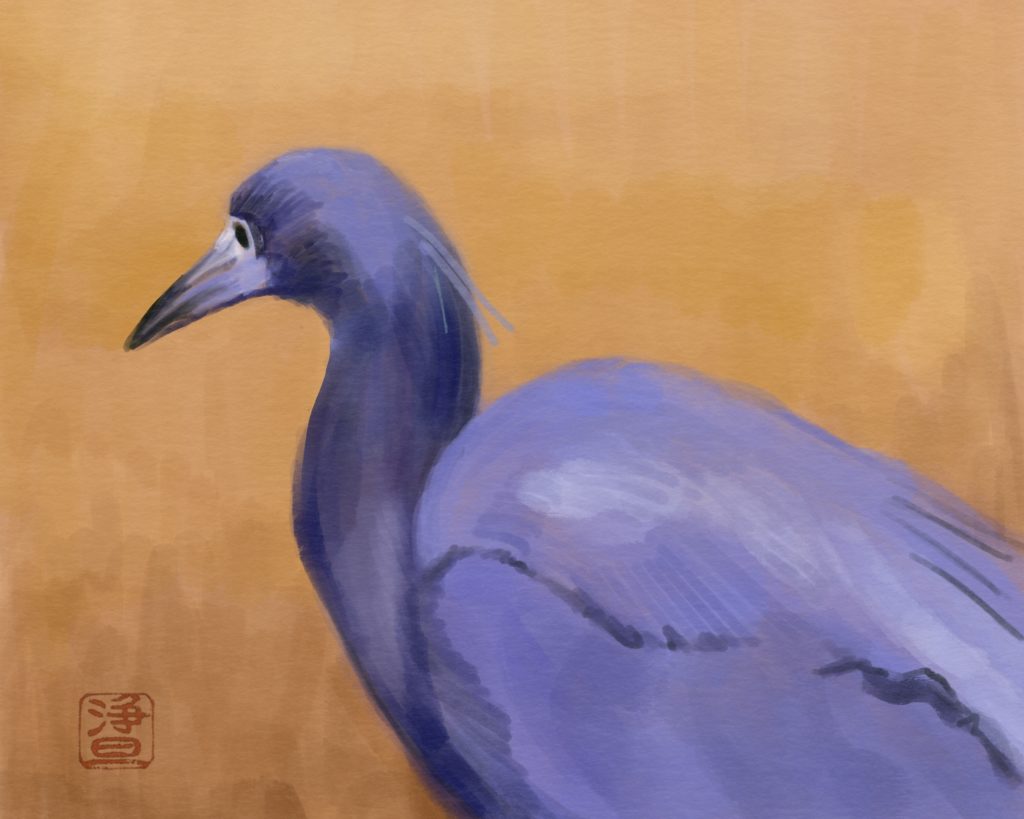
Little Blues are so much more blue than the great blues!
Heron in the Night
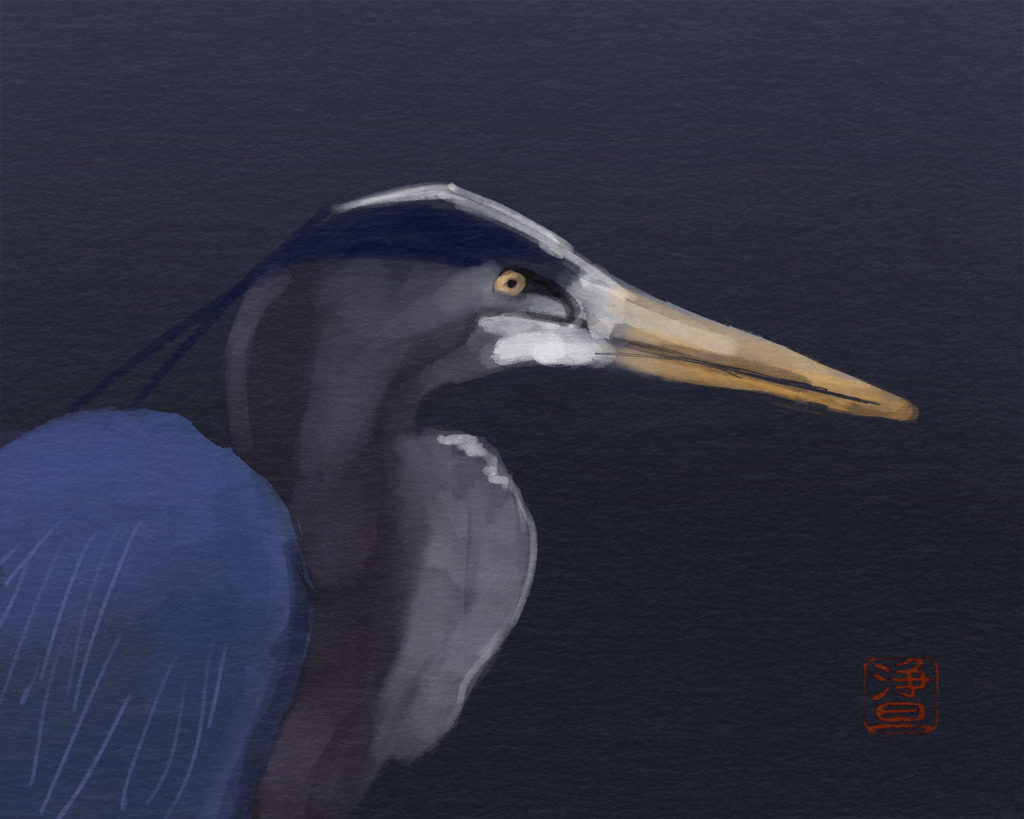
On the Prowl III
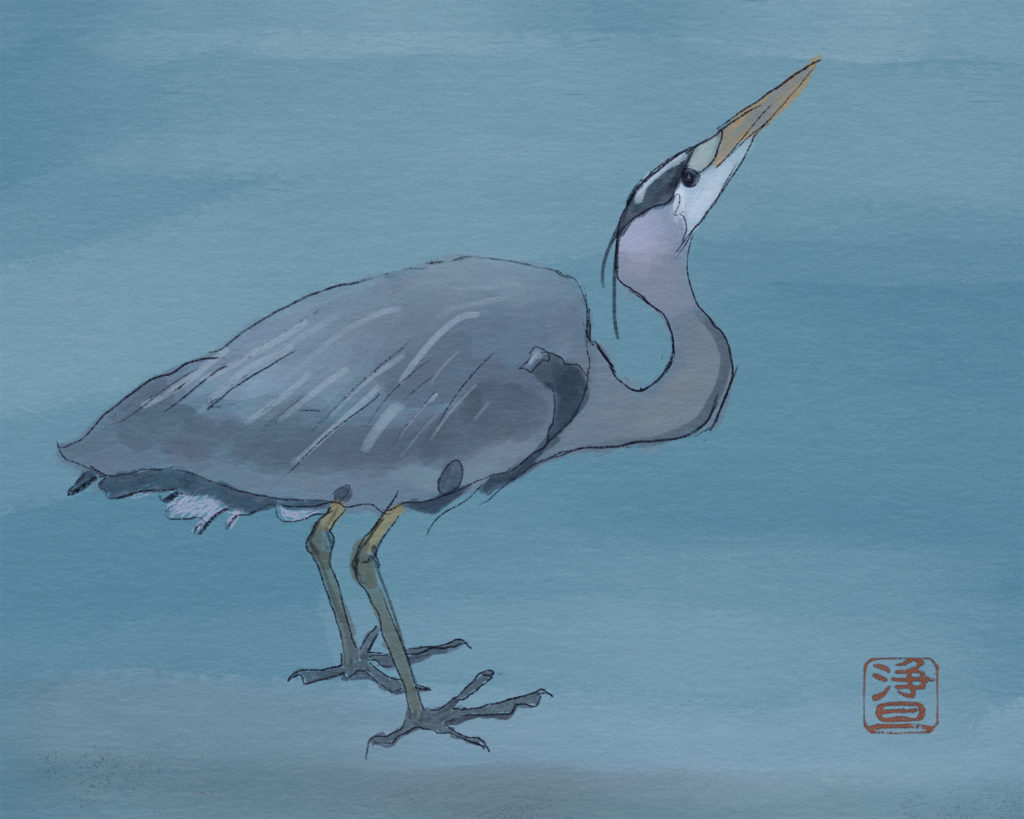
On the Prowl II
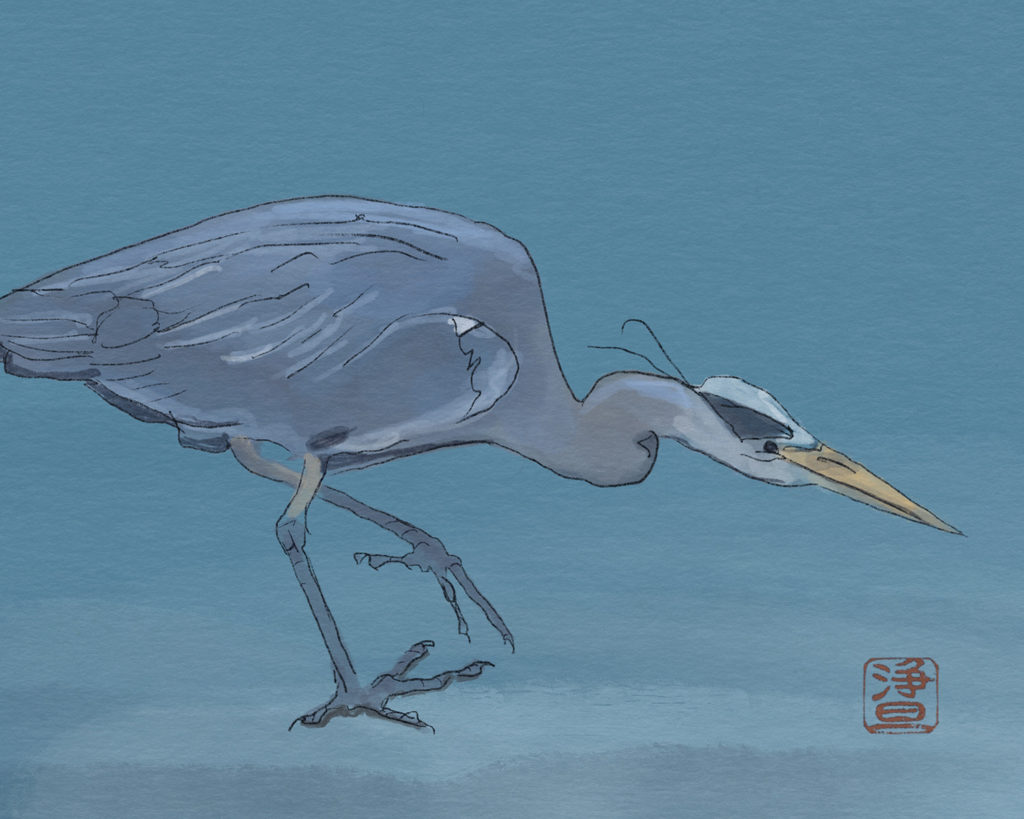
On the Prowl
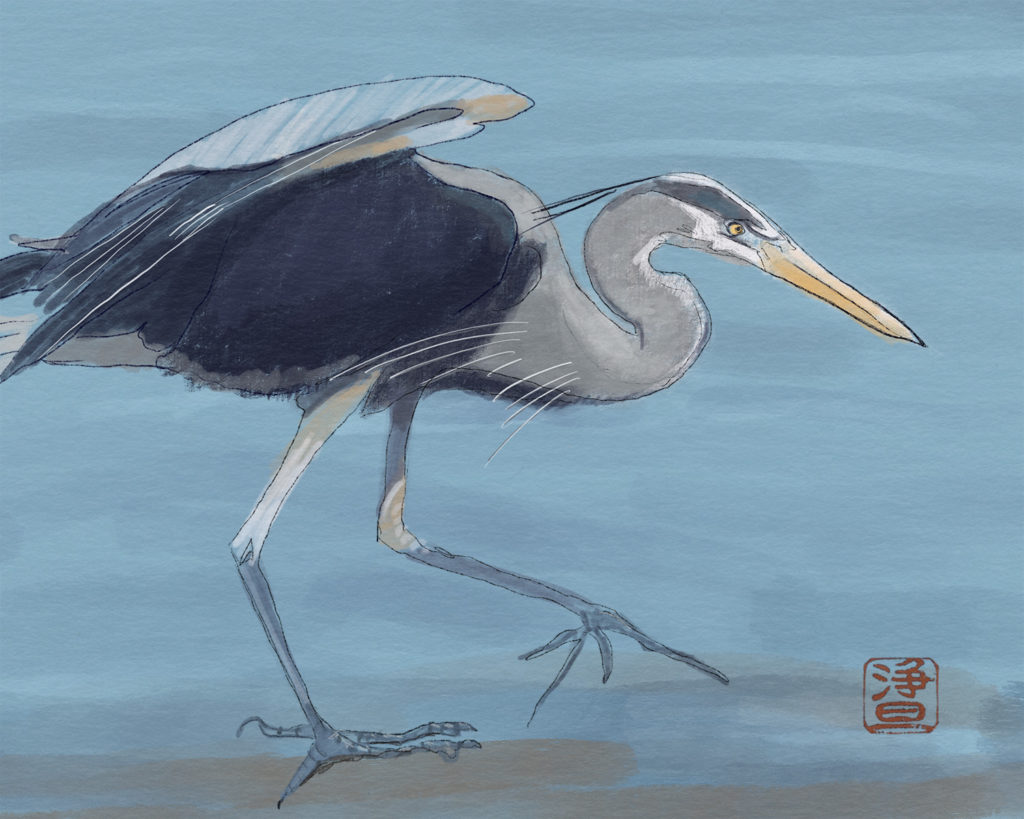
Dance
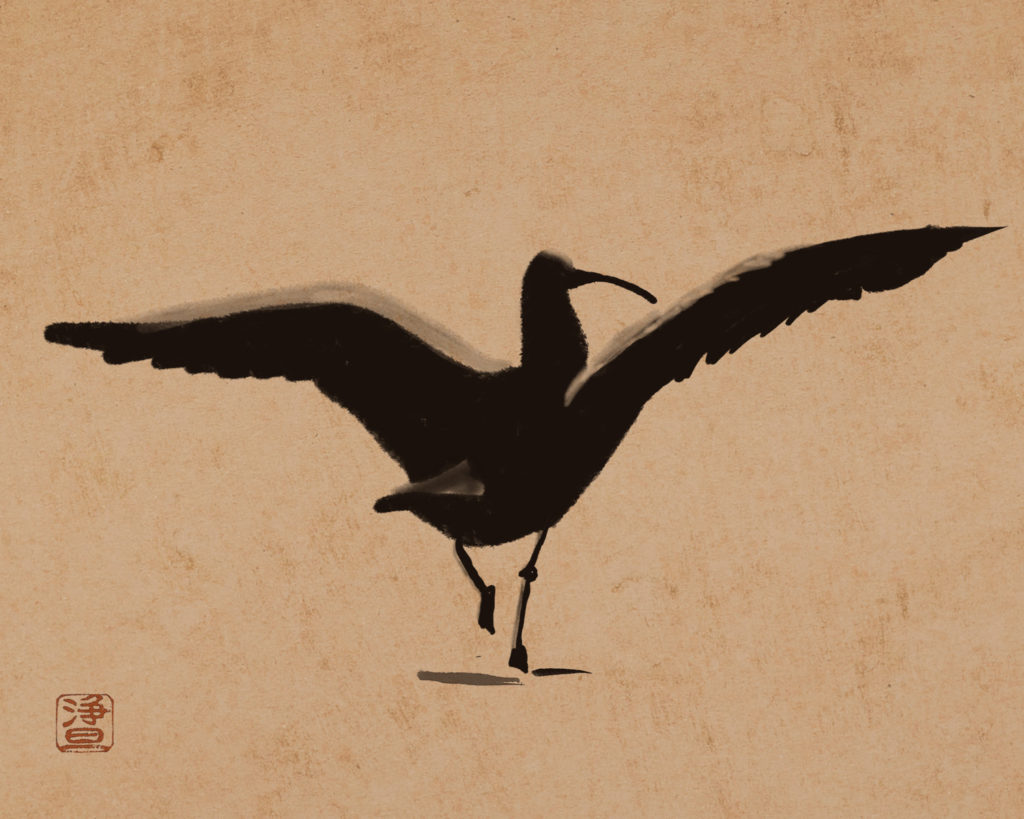 This was inspired by a photograph of my friend Cary Nowell’s, and drawn to celebrate the life of her beautiful mother, Joan Matthews.
This was inspired by a photograph of my friend Cary Nowell’s, and drawn to celebrate the life of her beautiful mother, Joan Matthews.
Something to Say
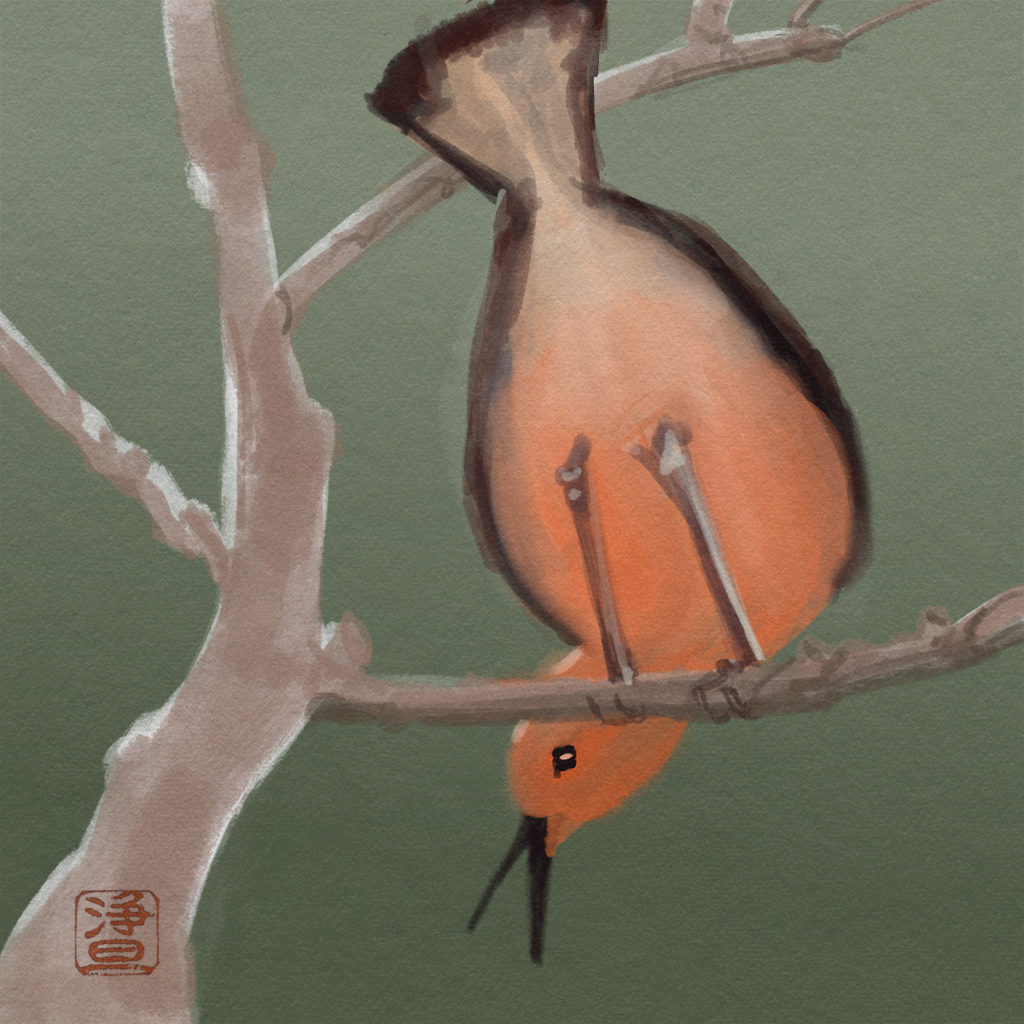
Alive!
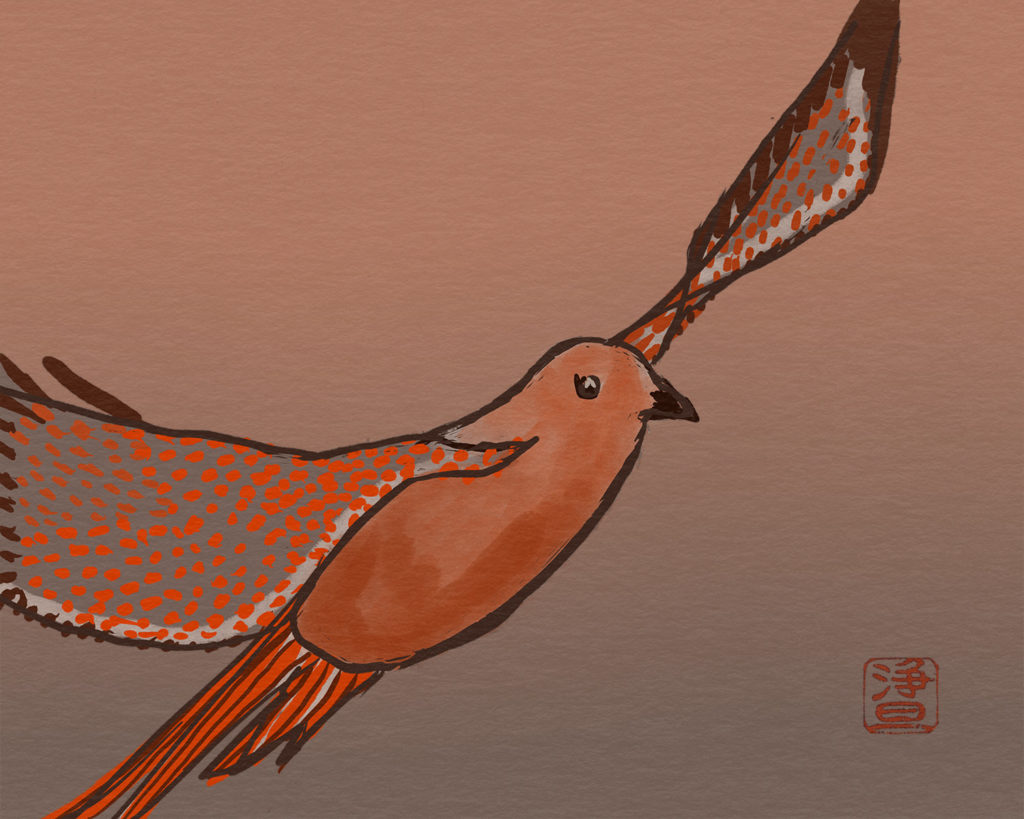
Great Blue
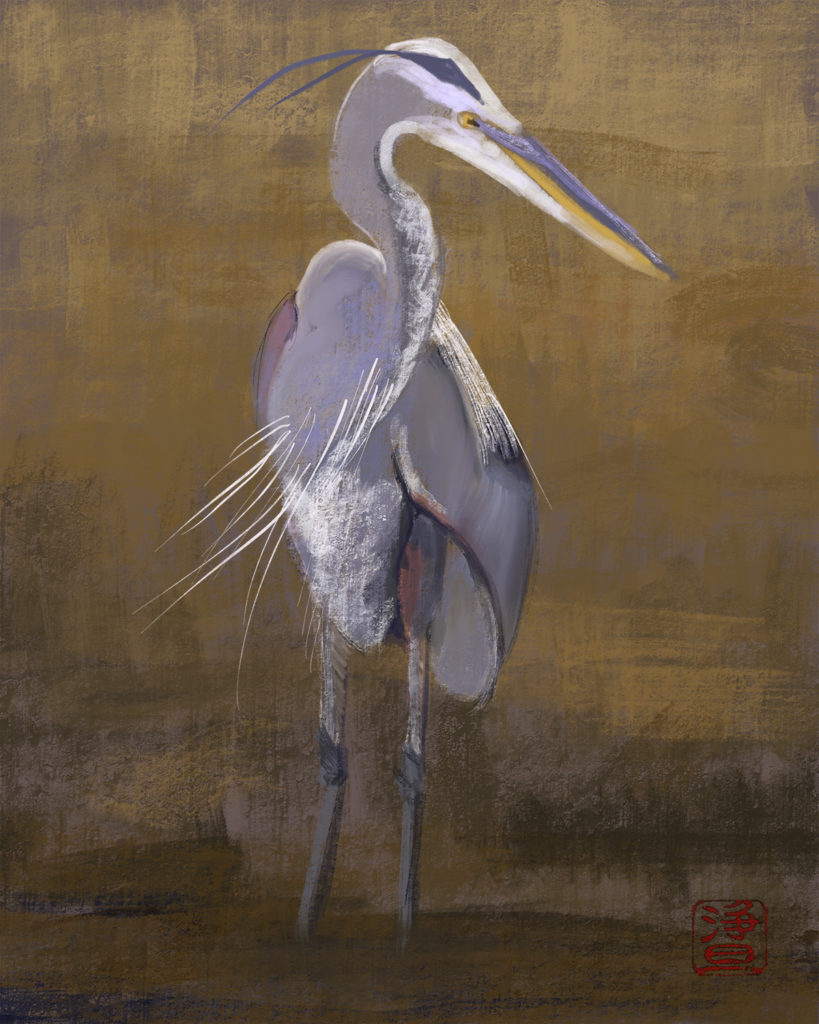 This Great Blue Heron was inspired by a photograph taken by my friend Barry Bergey …
This Great Blue Heron was inspired by a photograph taken by my friend Barry Bergey …
Agami Heron
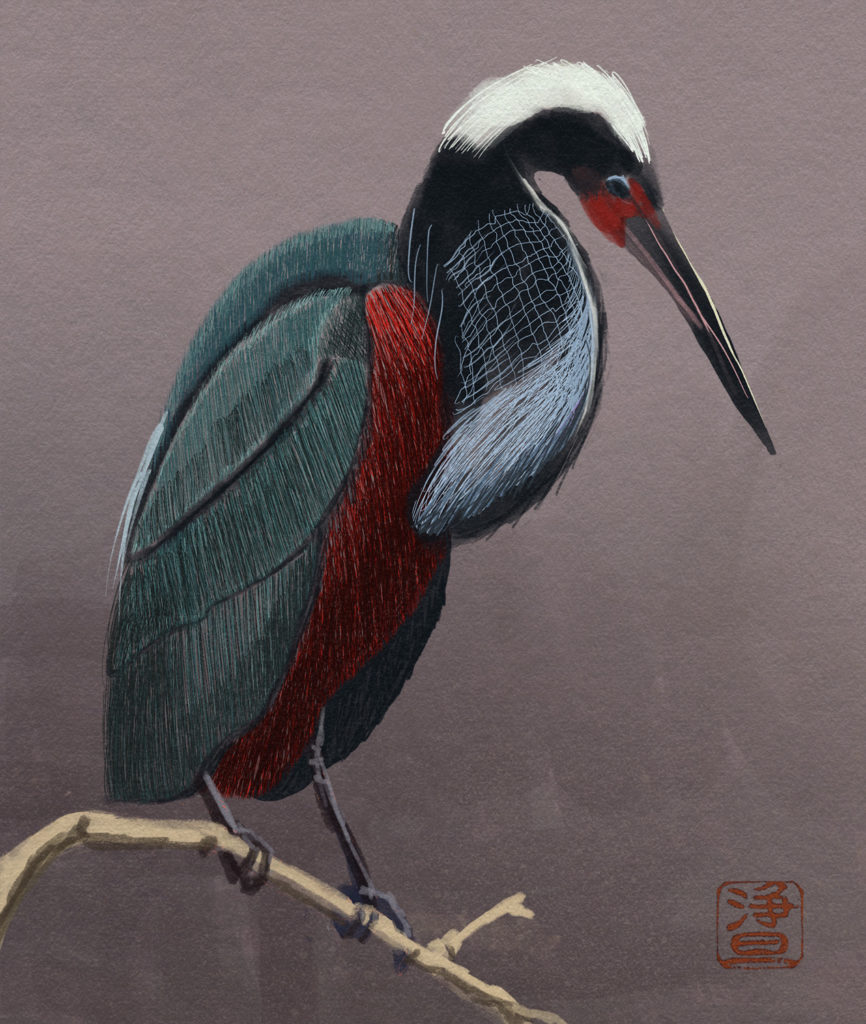 The Agami heron is found in rainforests from Panama down into Brazil. In Brazil, it is called the hummingbird heron because of its coloring. This is very different from how I usually work but I spent nearly eight hours in the Denver airport yesterday because of plane delays, and once I started playing with fine lines for the feathers, it was meditative and even a little addictictive…
The Agami heron is found in rainforests from Panama down into Brazil. In Brazil, it is called the hummingbird heron because of its coloring. This is very different from how I usually work but I spent nearly eight hours in the Denver airport yesterday because of plane delays, and once I started playing with fine lines for the feathers, it was meditative and even a little addictictive…
Capped Heron
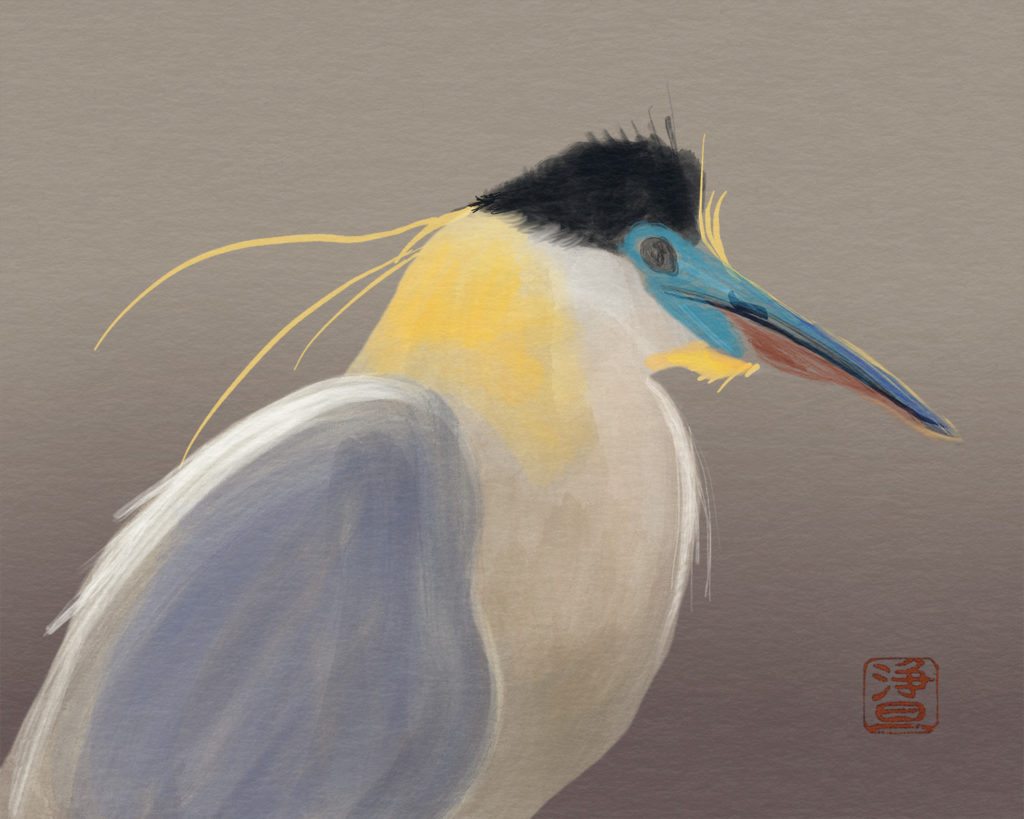 I am so grateful for the incredible wildlife videographers and generous teachers who post their love of birds on YouTube and other sites. Audubon shot his study specimens, and at least I can say that no birds were harmed in the making of my paintings (and the rooms I inhabit smell better than his did, if I am to believe reports). I learn so much along the way, including the fact that there are 64 species of herons around the world, including this delicately colored denizen of rainforests from Panama to northern Brazil.
I am so grateful for the incredible wildlife videographers and generous teachers who post their love of birds on YouTube and other sites. Audubon shot his study specimens, and at least I can say that no birds were harmed in the making of my paintings (and the rooms I inhabit smell better than his did, if I am to believe reports). I learn so much along the way, including the fact that there are 64 species of herons around the world, including this delicately colored denizen of rainforests from Panama to northern Brazil.
Great Blue Heron Sketch
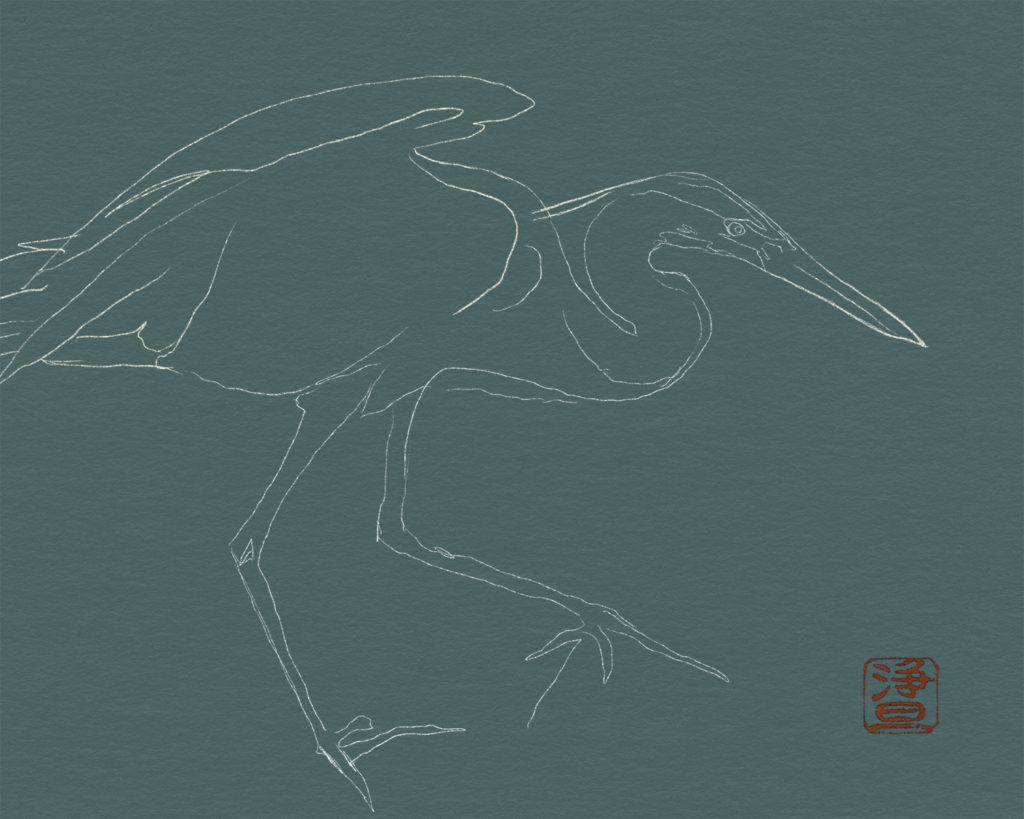 Which I may return to later…
Which I may return to later…
Ibis Pals
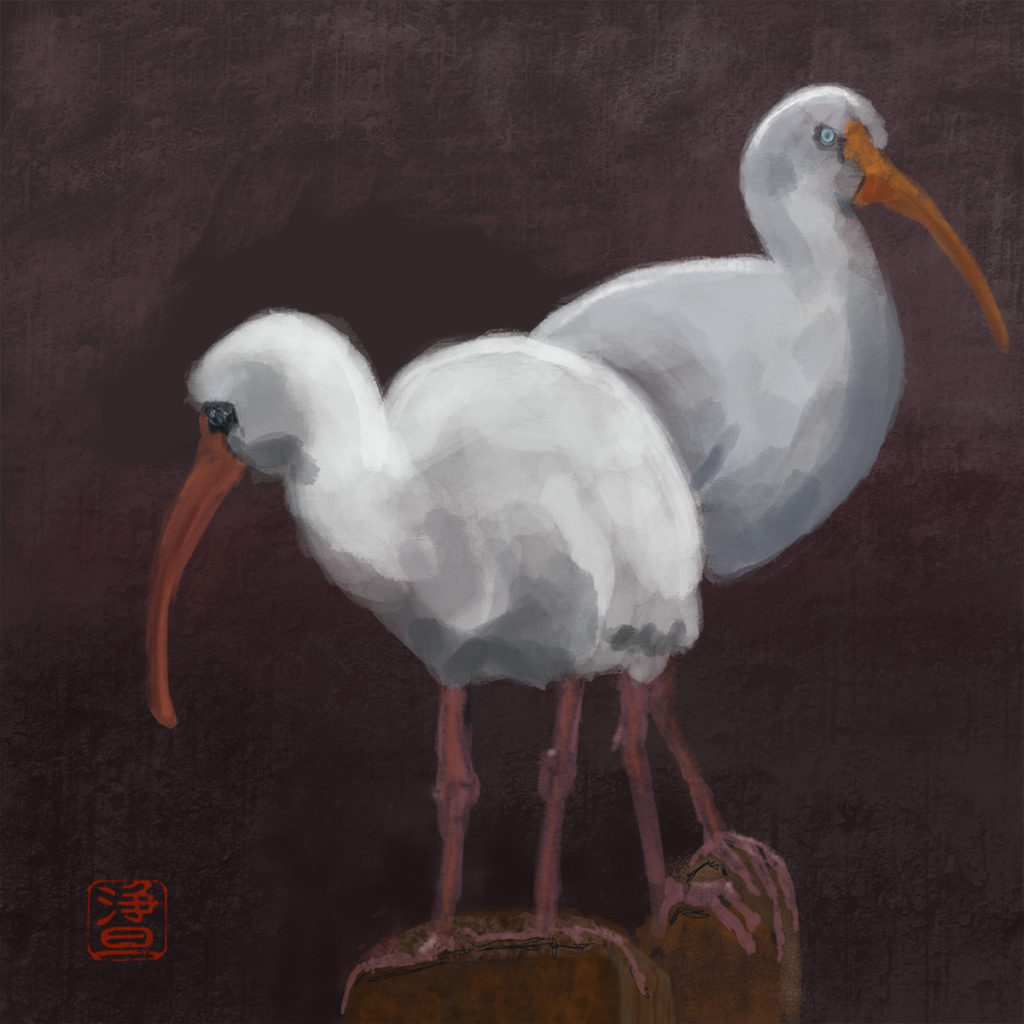
Great Blue
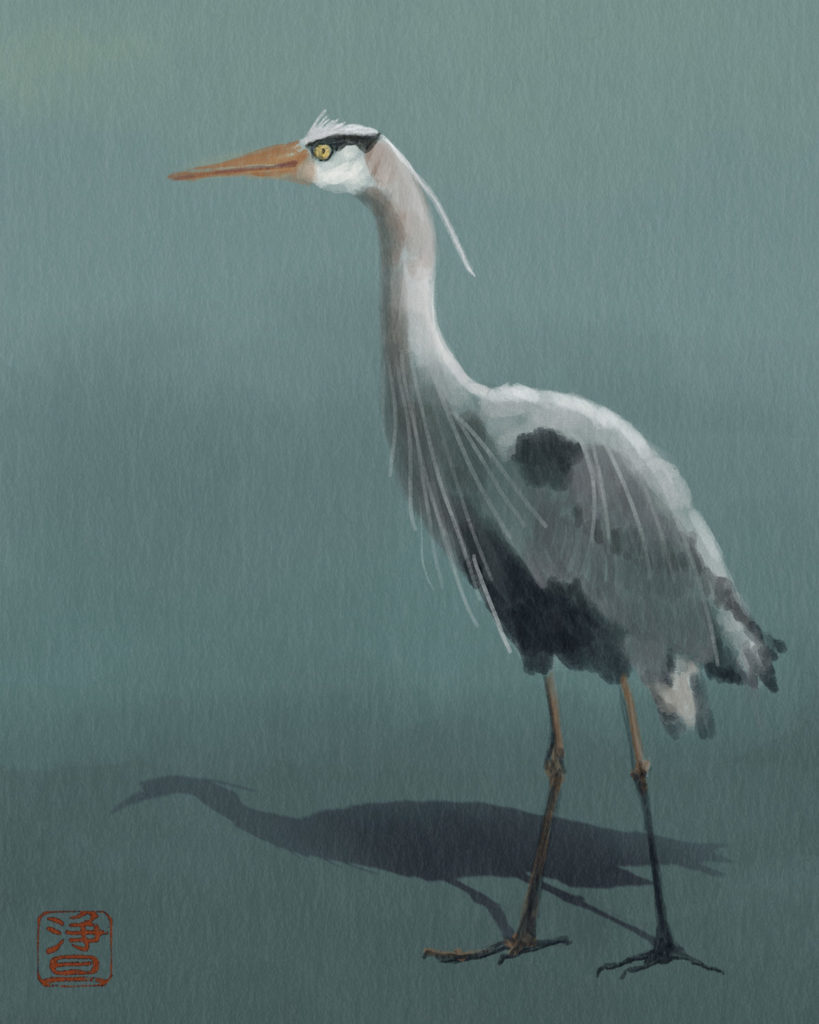
Great Blue
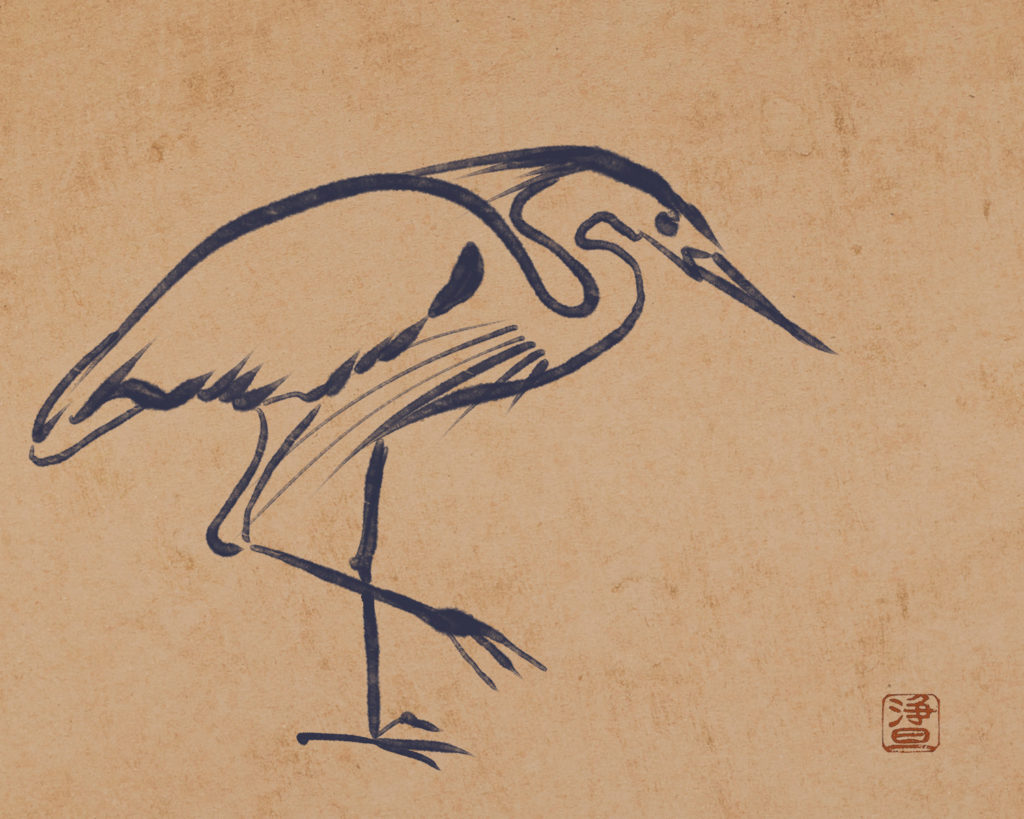
A Linear Loon
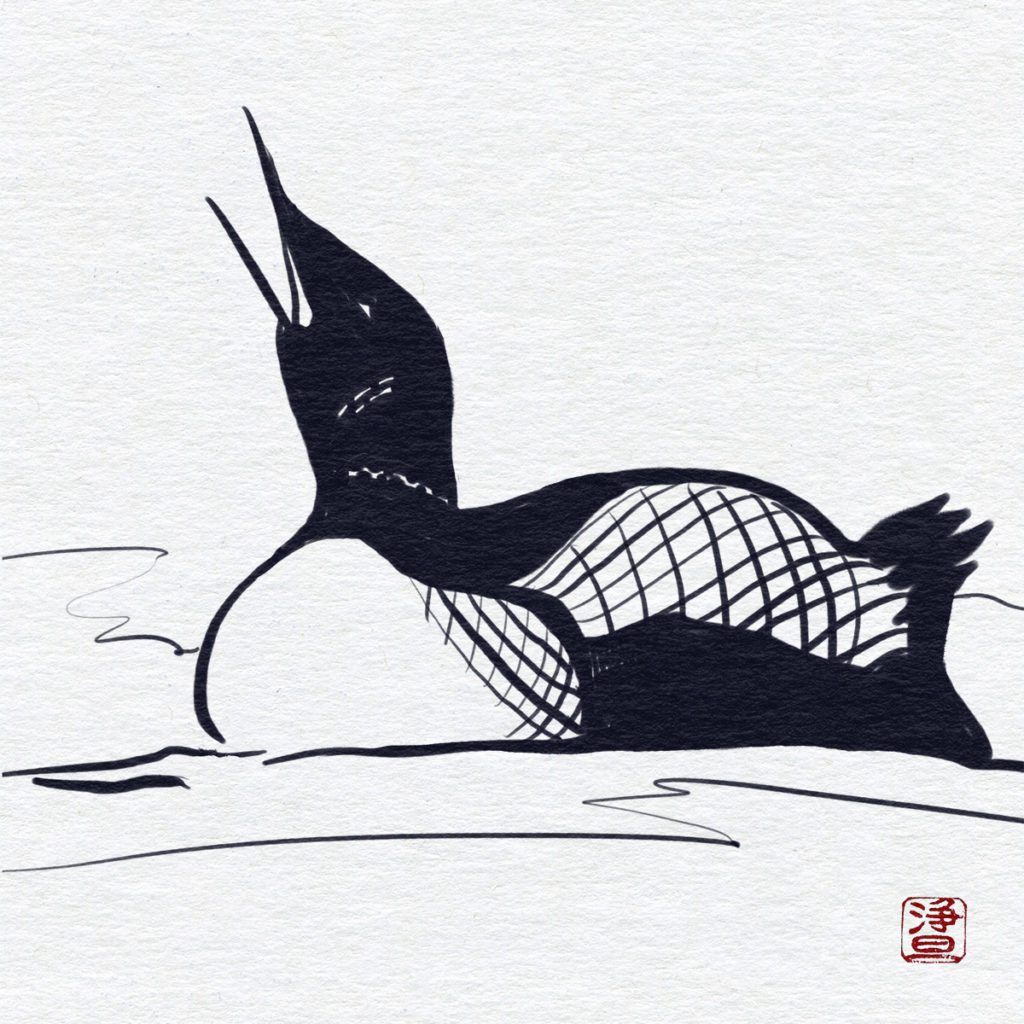
Ibis
 Their white downy bodies and their comical beaks just tickle me…
Their white downy bodies and their comical beaks just tickle me…
The Curious Ibis
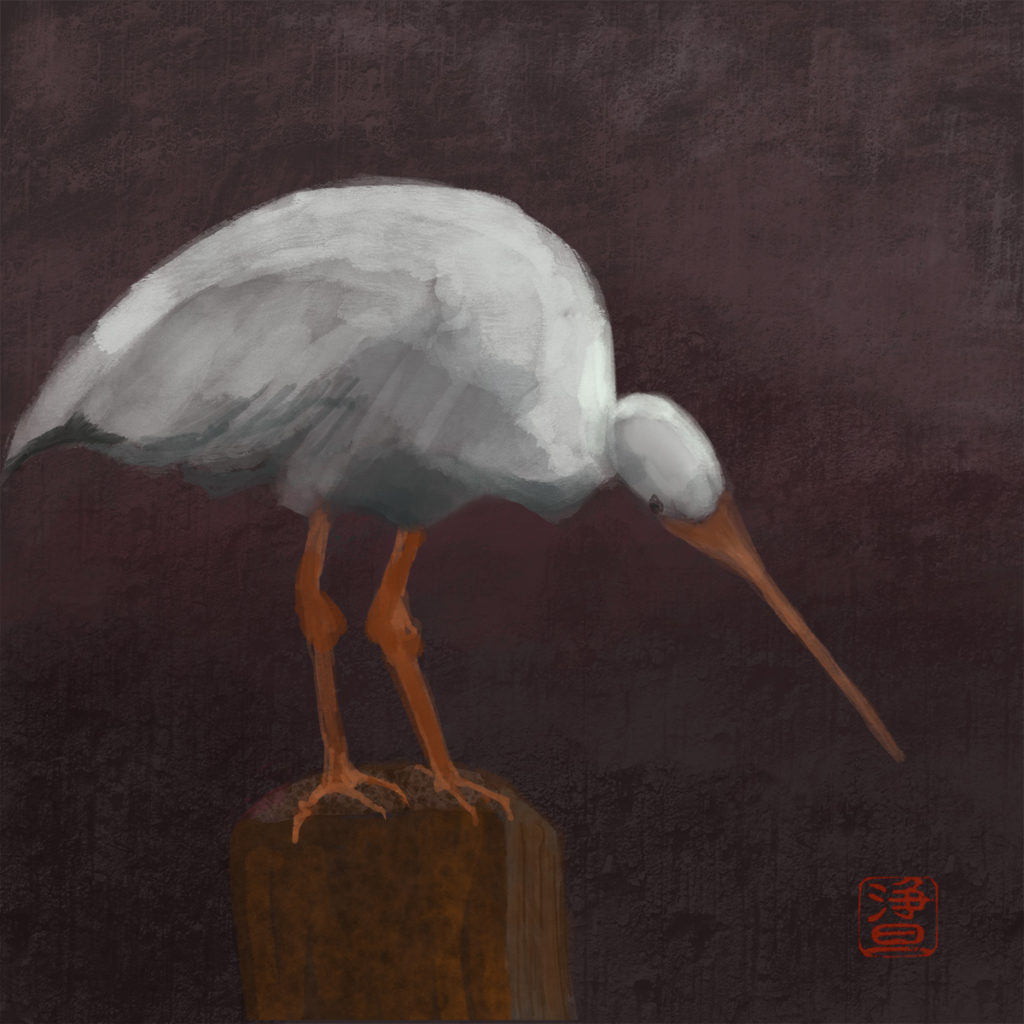
Ibis in the Moonlight
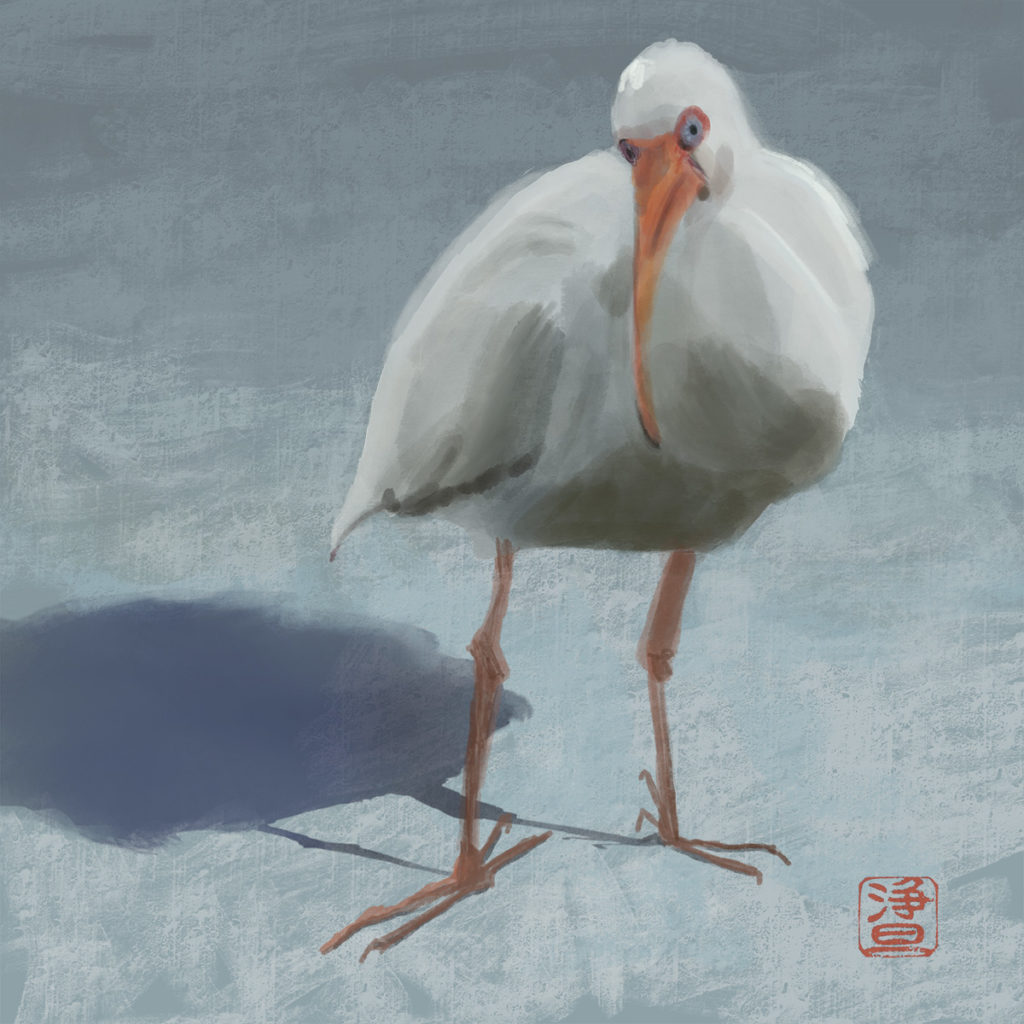
Wilder
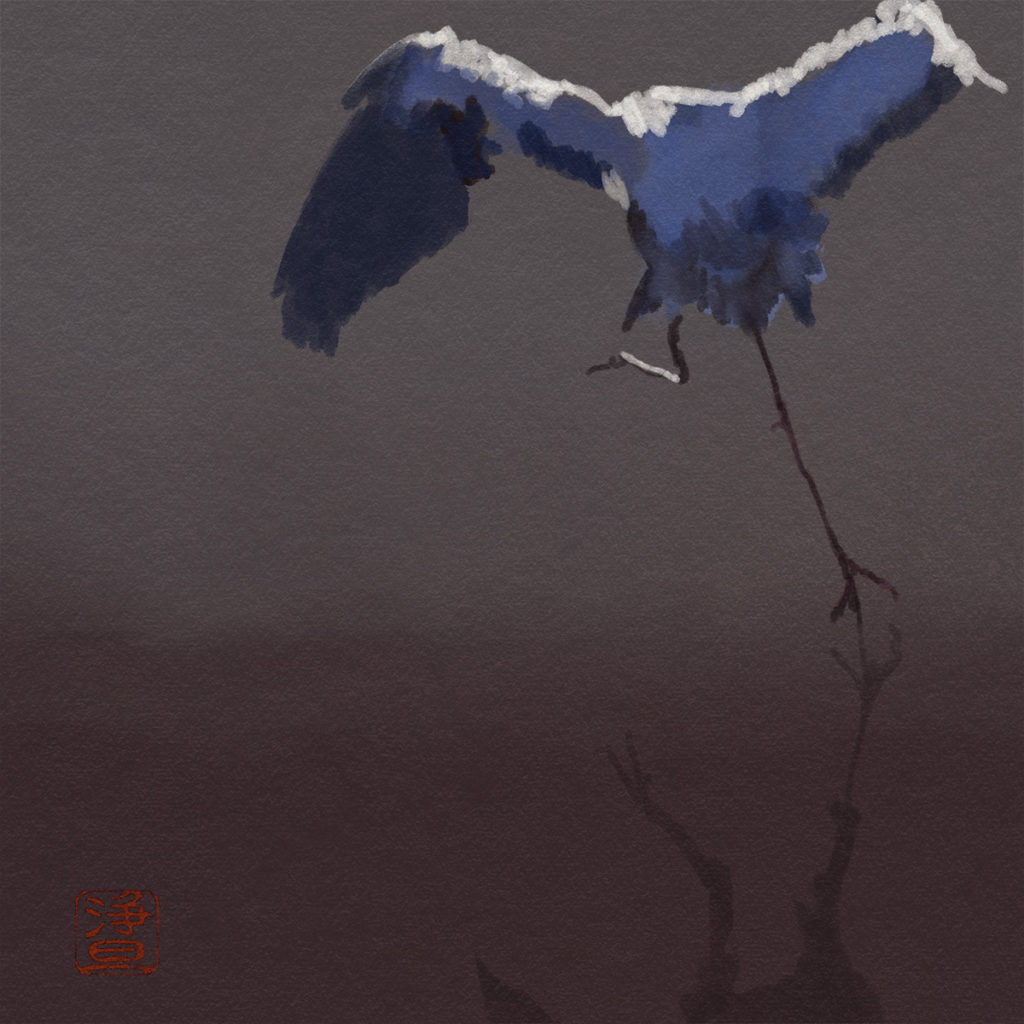
Yikes
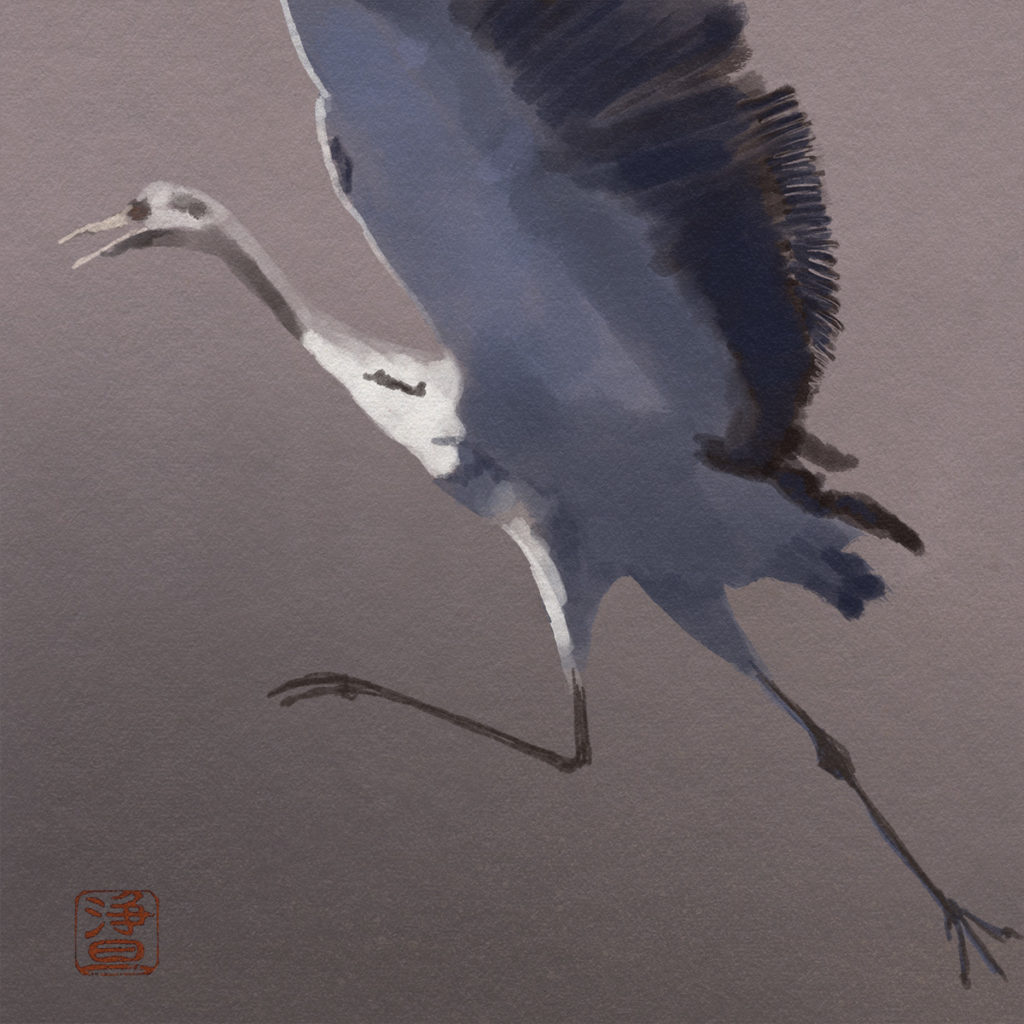
Dancing in the Moonlight
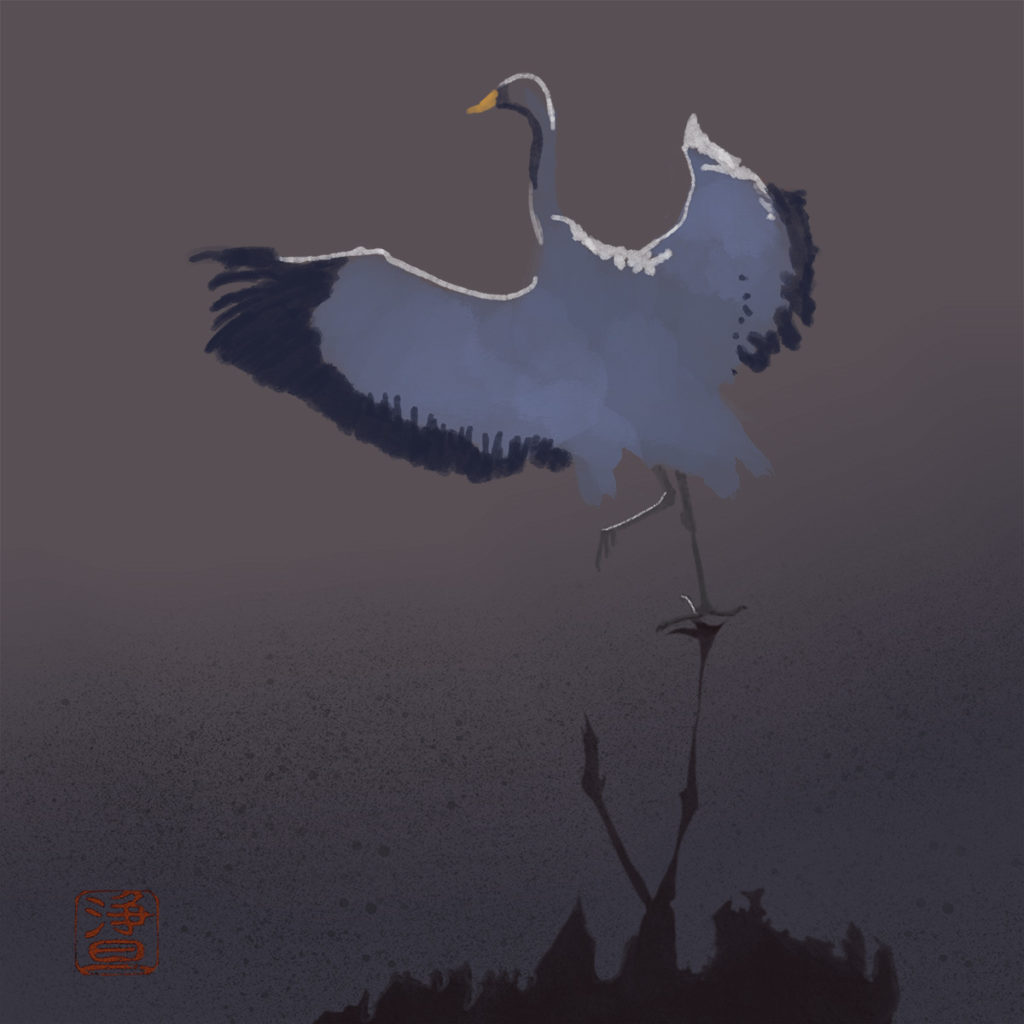
Improbable
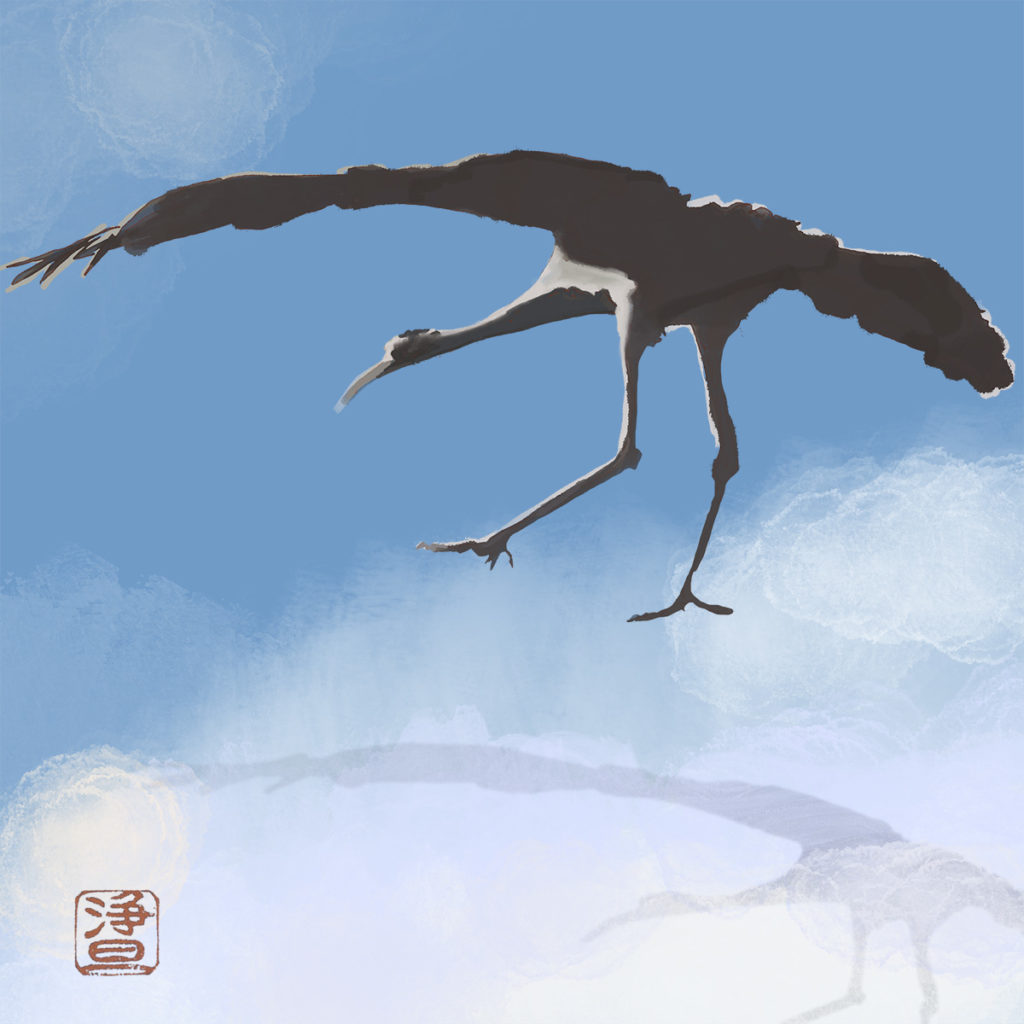
The Underside
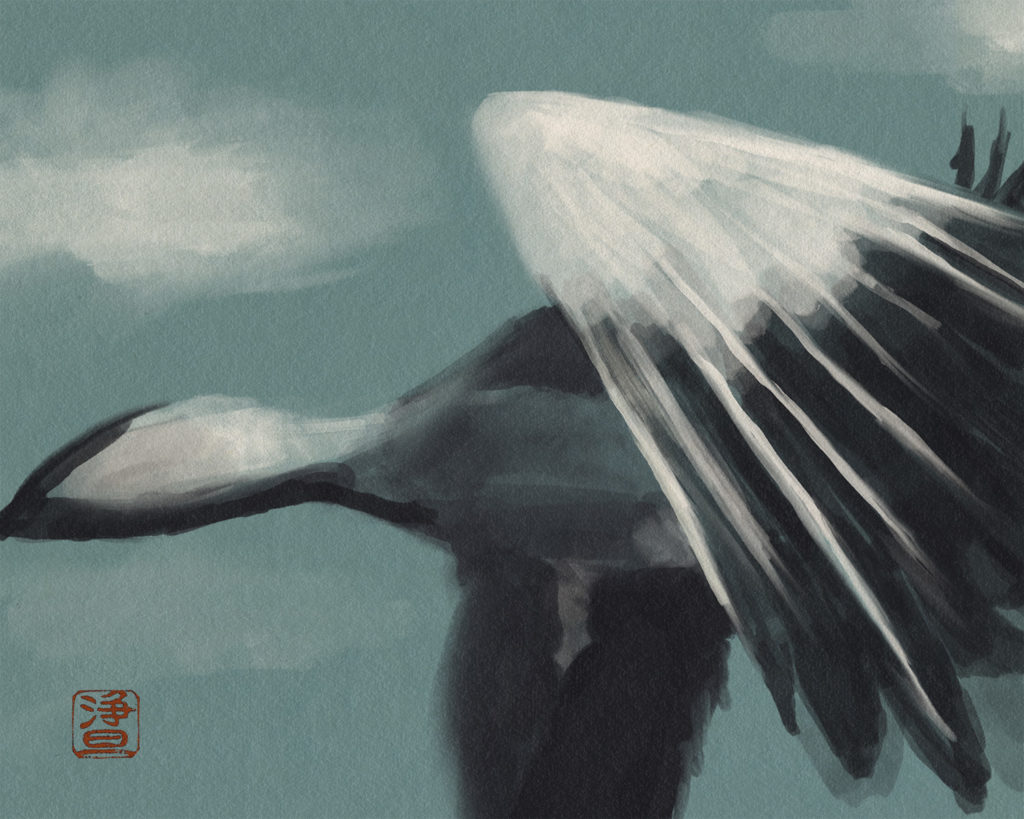
The March
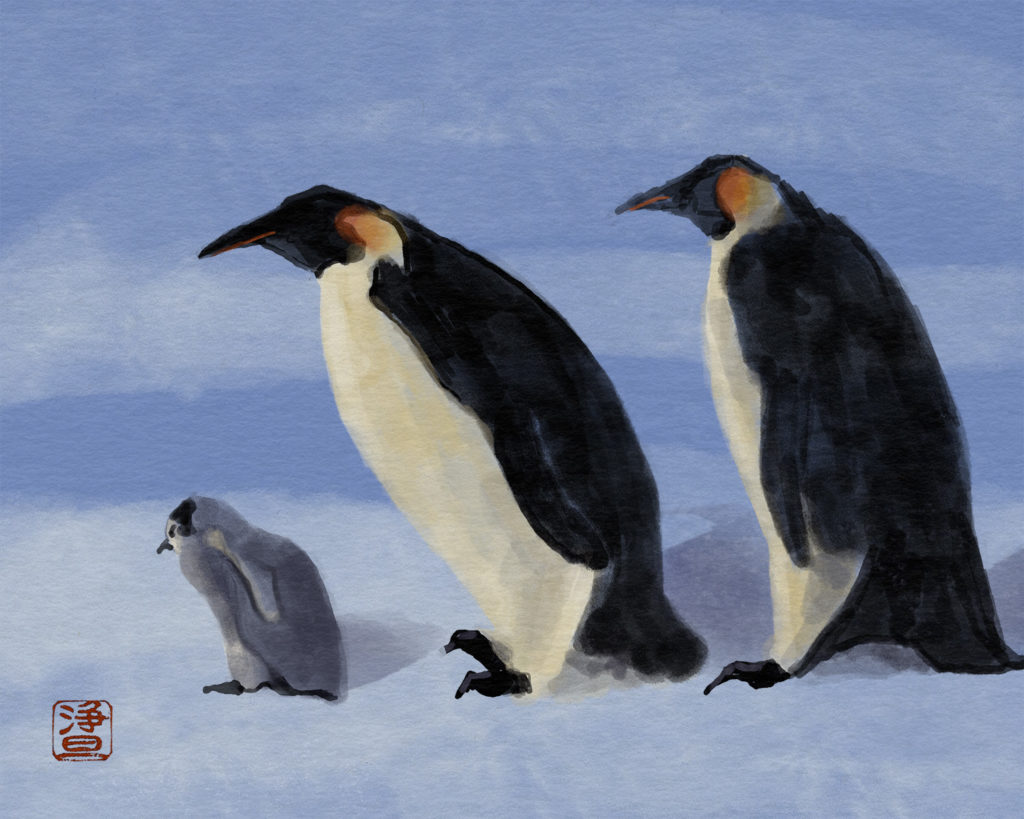
Flicker
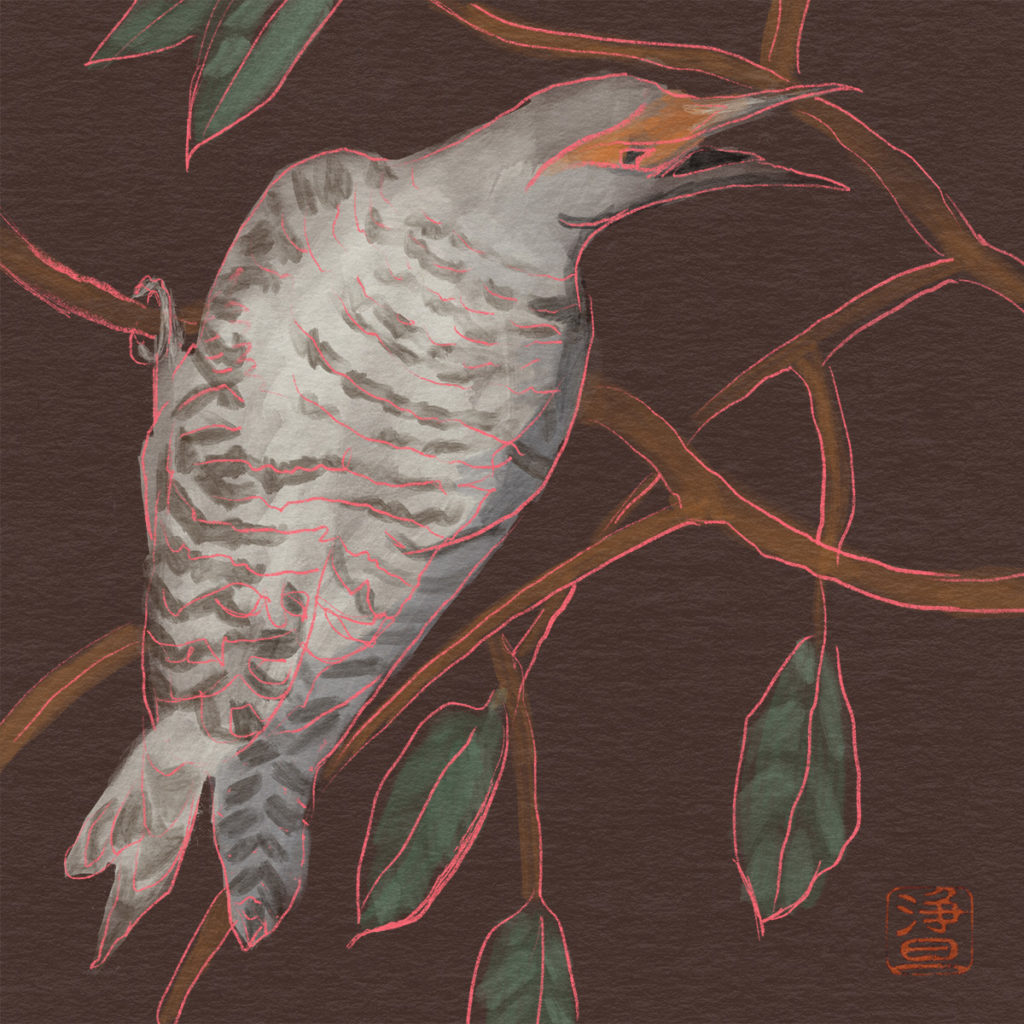
Quick Sketch Goose
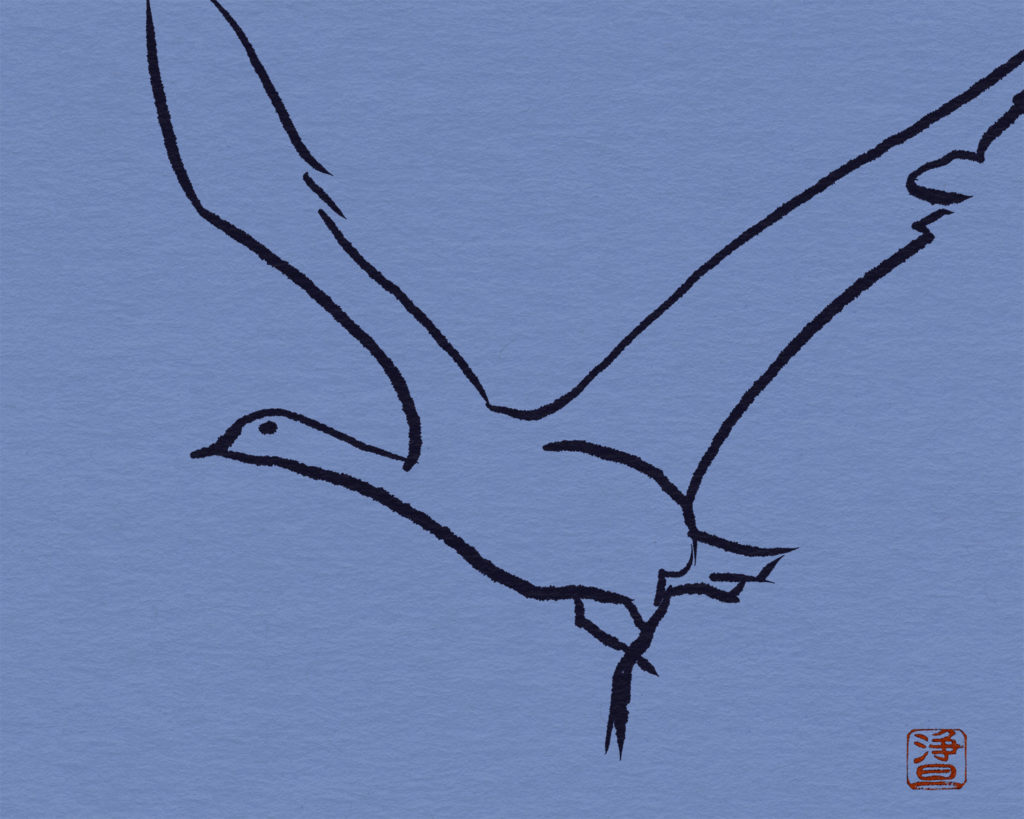
Nuthatch
